Glossary of Archery Terms
Glossary of Archery Terms – All Phrases, Slang, and Terminology
We’ve compiled an extensive, alphabetical glossary of archery terms. This list was made as extensive as possible with special consideration for the beginner archer. Go ahead, compare our list with any other out there on the interwebs. You’ll find ours has more words and phrases and in our opinion, the definitions are more descriptive and entertaining to read. You may use this glossary of archery terms as a reference guide, by looking up the word or phrase you are interested in or read it however you see fit. Either way, you will be sure to enrich your archery knowledge and vocabulary.
A
Aim:
Most archery is an exercise in aiming. Other than instinctive archery, which requires the archer to more or less point at the target with their body, bow, and arrow, most archery relies on an aiming technique of one kind or another. The most primordial and rudimentary aiming method is to look down the shaft of the arrow and line up the point with the target. More modern bows have sights that aid in getting an accurate shot
Aluminum:
With archery coming into the modern era, new materials and designs for making bows and arrows have been utilized. Aluminum arrows are light and cheap. They are heavier than carbon arrows of the same volume however they can be produced very quickly and with minimal cost. Sometimes they can also be repaired if slightly bent. Aluminum is also used to build cams and some other components on compound bows.
AMO (Archery Manufacturers Association):
Now officially known as the ATA (Archery Trade Association). Serving members since 1953, the ATA represents manufacturers and businesses in the archery business. Check out their website: https://archerytrade.org

AMO Length:
This is a standard that was set by the ATA (formerly AMO) that refers to bow length. It is standardized to mean the length of the string plus 3 inches. For example, if you have a bow with a string that is 50 inches, your AMO bow length is 53 inches. I personally never use this standard. I pull out a measuring tape and measure the length of the bow (tip to tip), usually unstrung because the strung bow length can vary depending on the length of the string.
Arbalest:
An arbalest is a type of late medieval crossbow. It has steel arms and is typically larger and more powerful than earlier crossbows. A ratcheting winding mechanism is used to cock back the weapon into its ready-to-fire position.

Archer:
I think we all know this one but here is a definition. According to the Oxford online dictionary, an archer is defined as someone who shoots with a bow and arrows.
Archer’s Paradox:
Firstly, what is a paradox? Something that appears contrary or opposed to common sense yet appears to be true. The archer’s paradox refers to the phenomenon of an arrow traveling along a different path than the one expected by the archer when aiming.
The paradox is explained by the fact that an arrow flexes when it is released. This flexing is caused by slight horizontal movements of the string upon release as well as the compression of the arrow from the force exerted on it by the released string.
As an arrow flexes when leaving the bow, it is in fact not the path the arrow is pointing at that the arrow follows. The arrow follows the path of a line that passes through its nodes. The nodes are the two points on the arrow that do not oscillate as it flies.
Many modern recurve and compound bows have risers with cutouts so that the arrow points visually along its line of sight.
Shooting a thumb release requires the arrow to typically be placed on the right side of the bow for a right-handed shooter. The technique of shooting with a thumb release also employs a technique known in Turkish as khatra, which pulls the bow away from the arrow upon release. This causes the arrow to fly straighter with less oscillation.

Having a properly spined arrow for a particular bow can be very important when it comes to shooting consistently and accurately. Spine refers to the stiffness of an arrow of a given length.

Archery:
This should be an easy one. The Oxford dictionary defines archery as “the art or sport of shooting arrows with a bow”. We would add that archery is the art, science, and sport of shooting arrows with a bow. One of the oldest and most widespread activities in the world. Archery was a means of hunting and waging war for thousands of years. Therefore studying archery also affords us a great means to study history.
ArcheryHistorian.com:
Speaking of history and archery, these are two of our favorite things! That is why, out of a labor of love, we founded ArcheryHistorian.com back in 2015. ArcheryHistorian.com promotes learning, the study of human history, and the practice of archery.

Arm Guard:
A protective piece of equipment for the archer’s arm. The arm guard protects the ventral or inside part of the archer’s forearm of the bow hand (the hand that holds the bow). The arm guard protects the inner forearm from the string upon release. Anyone who has been whacked a few times by a string like this knows that it can be quite painful, especially from a heavier bow.
Arm guards come in many different shapes, sizes and are made from a variety of materials. Typical materials include leather or plastic. Some were made of metal, bone, ivory, and other exotic materials.
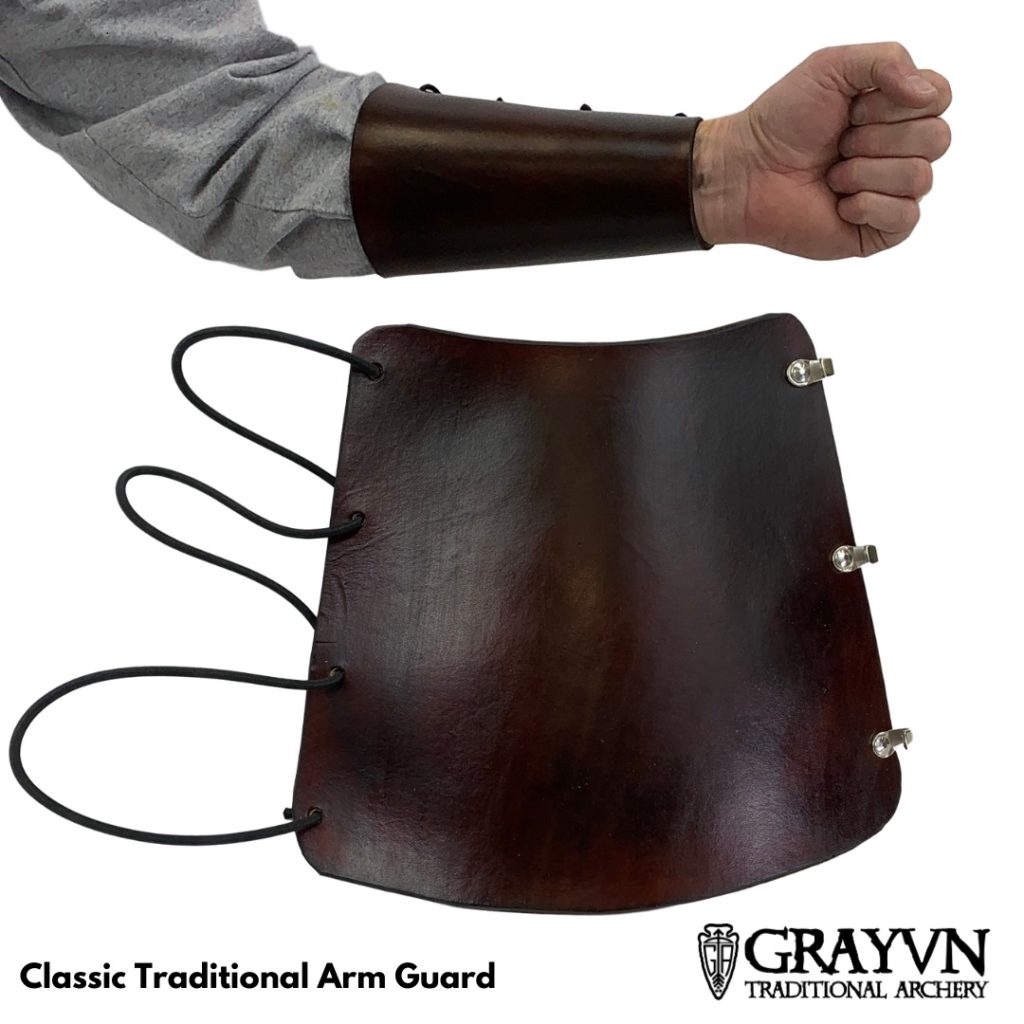
Arrow:
The best friend of the bow. The bow and arrow have been well acquainted for a very long time. An arrow is the projectile launched by a bow. It consists of a long cylindrical shaft with a weighted and usually pointy or bladed attachment on one end known as the arrowhead. This is the part that points outwards from the archer and the bow when being shot.
The other end of the arrow contains the nock, which is a grooved section that accepts the bowstring. Slightly ahead of the nock is where the fin stabilizers are, commonly called fletching. These serve to stabilize the arrow as it flies. Traditionally, fletchings are made from feathers.
A multitude of arrow types exist. Barbed broadheads for hunting, sharp and pointy steel bodkin points for penetrating armor, the list goes on and on. We wrote a fairly extensive article on the different types of arrows which you can check out here: https://archeryhistorian.com/types-of-arrows.

Arrowhead:
The arrowhead is the attachment that goes on the one end of an arrow as illustrated above. It is the “business end” of the arrow. The most primitive “arrowheads” were not attached to the shaft, rather the shafts were simply sharpened. Next came stone arrowheads. Carefully flaked bits of flint were inserted partially into the shaft and bound in place with twine.
Arrowheads are typically inserted into the shaft via a tang (a thin protruding section at the rear of the arrowhead) or the arrowheads are inserted over the shaft via a hollow, conical section at the back of the arrowhead.
Arrowheads come in a variety of styles, from field tips for target shooting to large broadheads for hunting some big game. Once again we would refer you to our article on arrows here for more: https://archeryhistorian.com/types-of-arrows.
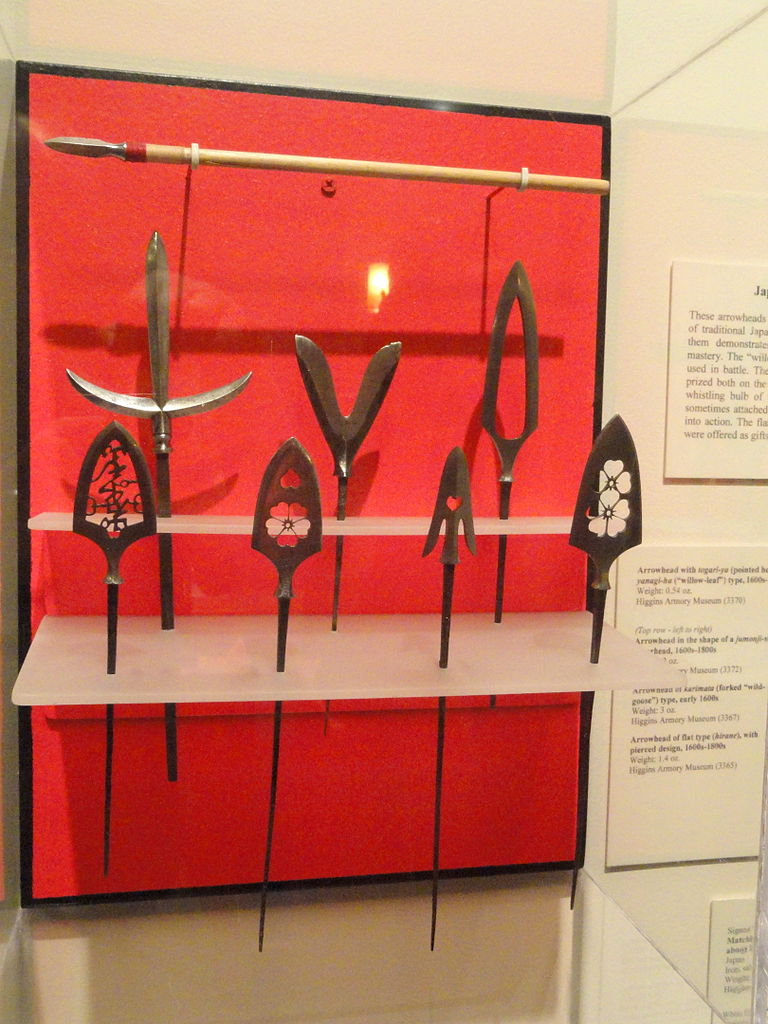
Arrow Rest:
An arrow rest is a relatively new invention. Most “arrow rests” in the old days were simply the hand of the archer. An arrow rest is a portion of a bow where the arrow rests while nocked and/or being drawn.
The simplest form of arrow rest is a cut-out portion of the bow just above the handle or where the archer holds the bow.
As modern compound and hunting bows came into use, more sophisticated arrow rest configurations were invented and put to use.
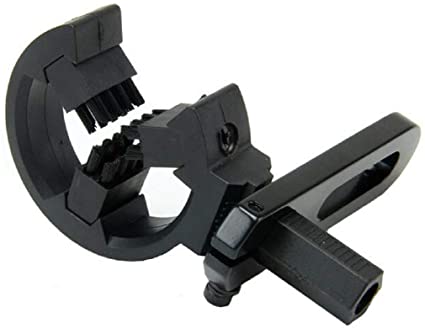
Arrow Nock:
A nock as it pertains to an arrow is a slender groove on the one end of the arrow opposite the arrowhead end. This groove accepts the bowstring. Nocks come in a variety of materials such as bone, horn, wood, metal and modern materials such as plastic. A groove cut directly into the arrow is known as a self nock.
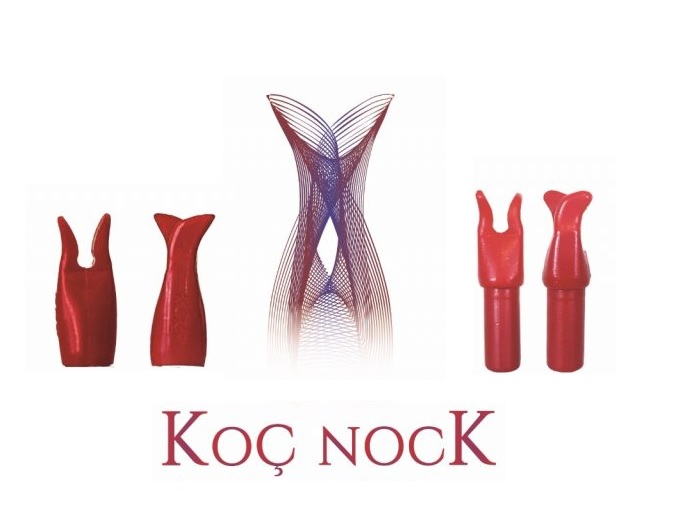
Arrow Plate:
A piece of hard and resilient material that is placed on the side of the bow just above the handle. The purpose of the arrow plate is to provide some protection to the bow and/or bow handle area from the friction of arrows and fletchings as the arrows fly past the handle and away from the archer. An arrow plate is also sometimes called a strike plate.
Arrow Shaft:
Somewhat self-explanatory. Consisting of a long cylinder, the arrow shaft is the main body of the arrow where the arrowhead, fletchings, and nock are attached.
Arrow Shelf:
Some bows have an area just above the handle where some material has been removed. The removal of material typically results in two perpendicular flat surfaces. The horizontal flat surface provides a place for the arrow shaft to be positioned. The vertical surface may hold an arrow plate or strike plate. This cutout or arrow shelf allows the arrow to be directly in line with the string. Without a cutout, the bow would be in the way and the arrow would not be able to be knocked in a direct line with the string.
Arrow Shower:
This is an activity where a group of archers (the larger the better), all lose their arrows more or less simultaneously. This is typically done so the archers shoot at an elevated angle and from a considerable distance, making the arrows seem as if the air raining down on the intended target(s).
Arrowsmith:
A person who makes arrows. An arrowsmith able to produce consistently high-quality arrows would have been in high demand in various times and places throughout human history.
Assyrian Bow:
The Assyrian empire was a mighy and ruthless war machine that had managed to rise from obscurity to control much of the middle east in ancient times. They were among the first to cast aside bronze and use a much more robust metal for forging the tools of war, iron. The iron age had begun.
Along with these material advancements, the Assyrians understood the importance of archery. Their infantrymen were expected to be proficient with the bow and arrow. The Assyrian bow is considered an angular bow becuase of it’s strung shape. It closely resembles the Egyptian bow. Several modern bowyers still make bows in the likeness of these ancient weapons. Check out the Assyrian by Jackal!
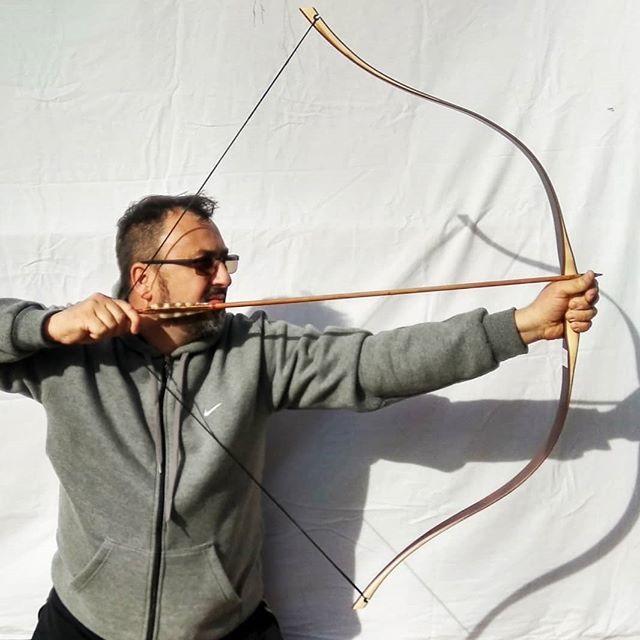
ATA (organization):
The Archery Trade Association (formerly known as the AMO). Formed in 1953 with renowned initial members as Fred Bear and Bob Lee, the ATA according to their own words on their website is involved with the following:
The Archery Trade Association is the organization for manufacturers, retailers, distributors, sales representatives and others working in the archery and bowhunting industry. The ATA has served its members since 1953. We work to increase the recruitment and retention of new, current and once-active archers and bowhunters. We are the driving force in defending, educating, and lobbying for the greater good of the industry and sport. We preserve and promote archery and bowhunting’s rich heritage to ensure active consumer participation, and successful manufacturing and retailing for generations to come. The organization also owns and operates the ATA Trade Show, the archery and bowhunting industry’s largest and longest-running trade show worldwide.
Check out their website here: https://archerytrade.org
A.T.A. (measure):
Acronym for axle-to-axle, the length between the two pivotal axles which hold the cams onto the limbs on a compound bow
Attila the Hun:
The king of the Huns from 434 until his death in March 453. Why is he here in the archery glossary? Well, it is because his people the Huns were well known to be some of the very best archers around in the ancient world. Most likely, Attila would have been a good archer himself. We don’t know for sure but I think it is a safe bet.
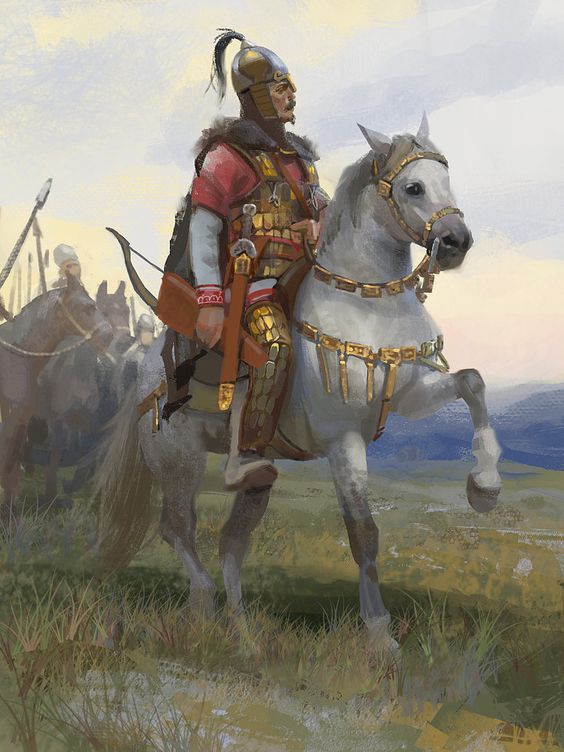
ASA Archery Shooters Association:
The ASA or Archery Shooters Association was created in 1993 in Kennesaw, Georgia. ASA archery is broken down into two categories, the ASA Federation (state level) and the McKenzie ASA Pro/Am Tour (national). The ASA Federation has chapters in 30 states with around 7,000 members.
Check out their website: https://www.asaarchery.com
Avars:
The Avars were a confederacy of nomadic tribes who came from the steppes of Eurasia. They settled in the former Hun domains in the 6th century A.D. At their height, their Khaganate or Kingdom encompassed much of modern-day Hungary, Austria, Romania, and the Balkans.
There is a hotly debated theory suggesting a Hun-Avar-Magyar continuum within the area of the Carpathian Basin.
They fought primarily as light cavalry with their chosen weapon, like the Huns who came before them and the Magyars after, was the composite reflex bow.
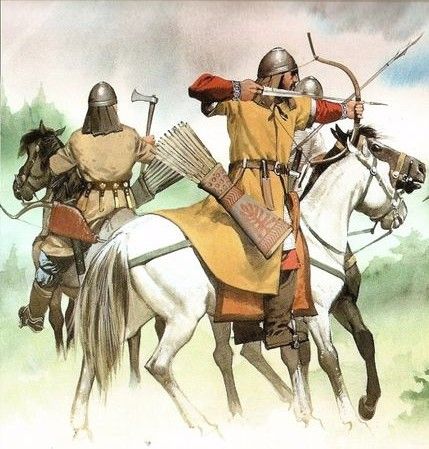
Avar Bow:
The Avar bow is an Asiatic composite reflex bow. Several bow remnants were discovered although no fully intact bows have been discovered thus far. Nevertheless, their rough shape could be discerned from what little remains were available. These were relatively large bows with non-contact siyahs or tips much like the Magyars bows that would arrive in Pannonia a few centuries later.
B
Back:
The back of the bow is the area of the bow that faces away from the archer as the bow is being held and drawn. The other side of the back of the bow (the area facing the archer) is known as the belly.
Just like the human anatomy, one may easily bend towards their belly. It is not recommended however to bend too far towards your back because you may break your spine which we’ve been told is not desirable.
Backing:
Material may be layered onto the back of a bow as a means of reinforcing this area or to achieve certain performance characteristics.
Bamboo:
A wonderful plant. Bamboo is an evergreen, tropical plant belonging to the grass family Poaceae. This plant is one of the fastest-growing plants in the world as some varieties are able to grow almost a meter in a day. Bamboo is of important economic significance in Southeast Asia and East Asia.
It is also used as a bow core wood. When heat treated produces a limb with exceptional elasticity and cast. Some varieties of traditional bow constructed using bamboo include the gakgung or traditional Korean bow, as well as the yumi, the traditional Japanese longbow.
Banana Fletch:
There are several fletching cuts available. Many archers cut their own.
The banana fletching design features the highest portion of the arc at or near the middle of the fletching, tapering off on both ends equally.
Some like the look of them, others say that they produce more nice than other cuts such as the parabolic fletch.
Barb:
A barb is a sharp, protrusion on the arrowhead which points backward, in the opposite direction of the actual arrow point. This feature prevents the arrowhead from being extracted easily. Illegal for bowhunting today. A bloody and painful ordeal to be shot with.
Barred Fletching:
Barred fletchings are feathers with stripes on them. These stripes typically run perpendicular to the direction of the arrow. This striped appearance is naturally found on the wild turkey or dark domesticated bird. Artificial barred feathers are less expensive and quite popular and common.
Barrel Tapered Arrow:
An arrow with its thickest part in the center which tapers down on both ends. This type of arrow construction is typical in flight arrows, especially Turkish flight arrows. This shape was found to be ideal for aerodynamic performance and cutting down some weight.
Belly:
The surface of the bow facing the archer when drawing the bow, the side with the bowstring. See diagram above.
Billet :
A length of wood used in making bows, specifically selfbows. Billets of wood are split lengthwise in slices in the same log to obtain similar limb performance characteristics.
Blunt:
An arrowhead with a flattened point, used for small game hunting or roving.
Bodkin Point:
A sharp and pointed arrowhead. These arrowheads were used by the English Longbowmen during the medieval era. The word comes from the Old English bodekin, which was a long pointed dagger.
Bodkin points typically come in two varieties. The first is what is known as the long bodkin point which as the name suggests is a long, slender, four-sided arrowhead. The Vikings used long bodkin points, which they brought to the British Isles. The next variety is a shorter four-sided arrowhead.
The practical application of bodkin points is armor penetration. Bodkin points are especially effective in breaking and penetrating chain mail, although some penetration can be expected at relatively close distances against plate mail.
Many a bodkin point were shot during the Hundred Years War between England and France, where the humble English longbowman faced off against the heavily armed and armored French knight.
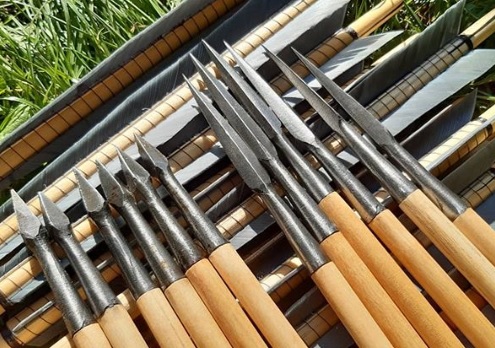
Bois d’Arc:
French for “wood of the bow” or “bow-wood”. This wood is derived from the Maclura pomifera, commonly known as the Osage orange, horse apple, hedge, or hedge apple tree. Some of the bows featured in our Archery Shop are indeed made from this type of wood.
Bolt:
A crossbow projectile; also called a quarrel. The word quarrel comes from the French carré, which means square. The bolt-heads were typically square or pyramidal, like a bodkin point. Bolts are typically shorter than arrows measuring around 15-20 inches long as opposed to bow arrows which measure around 30 inches long.
Because bolts are shot from crossbows that typically have a much heavier draw weight when compared to bow arrows, they are usually stiffer (higher spine) and have a heavier bolt head.
Boss (equipment):
A target, typically made from tightly compacted foam or straw.
Bowman (practitioner):
This one is fairly straightforward. A bowman is one who practices archery (a.k.a. archer)
Bow:
Our favorite thing! The bow basically a device for storing and transferring energy. Bows may be in essence one of the first mechanical devices produced by humans. The bow, in it’s most basic form consists of a slightly curved, slender and long material, typically wood, joined together at the tips by a string. When the string is pulled back, energy is stored withing the limbs of the bow.
Placing another smaller, straight piece of wood onto the string as it is pulled back, then releasing the string, transfers the potential energy stored in the limbs to kinetic energy which is carried away by the smaller straight piece of wood (known as an arrow). This is the basics of the bow and arrow. These two things have gone hand in hand for thousands upon thousands of years. Studying archery is the study of history. That is why our website archeryhistorian.com is here.
Bowfishing:
The use of archery equipment for catching fish. Bowfishing is nothing new, as many indigenous peoples such as the Filipino Negritos, have used this fishing method to catch fish since time immemorial.
The concept is simple enough, an arrow with a barbed arrowhead and a fishing line attached to the arrow is shot down into the water at fish. If a fish is struck, the archer/fisherman or fisherwoman reels in the catch.
Several modern bowfishing set-ups and equipment have been developed for modern archery bows, such as compounds, modern recurves, and even crossbows. The most fundamental piece of equipment in these set-ups is the reel. Most beginners start with a bottle-type reel, which requires the archer to haul in the fish by hand. Some graduate to spincast reels which allow the archer to play with the fish on the line to tire it out, very much like a reel on a fishing rod.
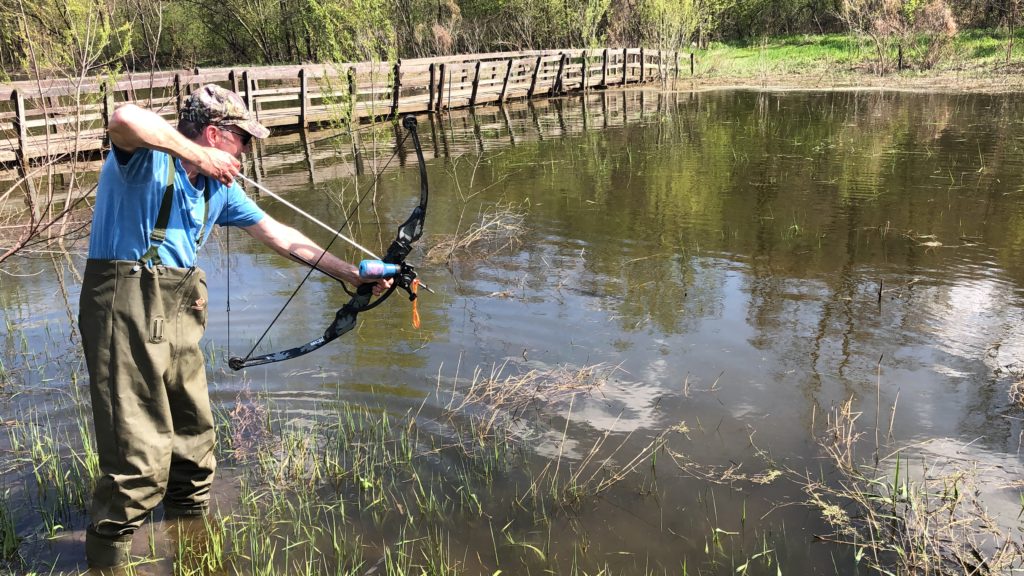
Bowhunter:
One who hunts with a bow and arrow.
Bowhunting:
The practice of hunting game using archery. This is one of the oldest and most widespread occupations of the human race. Amazingly it has gone on for thousands upon thousands of years and still goes on today. Of course, archery technology has evolved over the years, but the concept is still the exact same.
Modern bowhunting was revived and popularized by the American archery and bow manufacturer Fred Bear.
Bow Length:
At first glance, this term seems relatively easy to define. The term is somewhat self-explanatory. However, like with many other things in life, the devil is in the details. Are we measuring the length of the bow when it is strung or unstrung? From the very tips, or from the nocks? All very good questions. There have been some standards developed in this regard.
The so-called AMO length is a standard that defines the bow length as the distance from nock to nock, along the belly of the bow when the bow is unstrung. It is a good rule to measure the bow length unstrung as the bow length when strung can vary depending on the length of the string.
Bowstring:
A fiber joining two ends of a bow for launching arrows. Bowstrings come in a variety of designs and materials. In the old days, natural materials such as sinew, silk, rawhide, linen, and hemp have all been used.
Important characteristics to be found in a suitable bowstring material include tensile strength, lightweight, as well as resistance to abrasion and the elements.
As mentioned there are many materials and ways to construct a bowstring. Some are formed out of a continuous loop, while others, such a those used in traditional Turkish archery, have separate loops made to fit into the nocks.
Modern bowstring materials include various polymers (plastics), namely polyester. Dacron is quite popular for beginners. Some other modern bowstring material names include Kevlar, Spectra, Vectran, and Dyneema. Many use a composite of these materials to gain advantages of each.
Bow Stringer
A device used to string a bow. The simplest form of a bow stringer is the archer himself. Several techniques including the step though method as well as the push-pull technique are used to string a bow. However, in order to help ensure that an equal amount of stress is placed on the bow limbs, a specialized piece of equipment known as a bow stringer is used.
These can take many forms, but a popular type consists of a strap or string with one end containing a loop and the other a cup or socket which fits over one of the bow tips. One end of the string is nocked and the bow stringer end with the socket is placed over this bow tip. The bow is then braced in place on the grip and the bow stringer is pulled upwards to the point where the other end of the bowstring can be nocked in place. See our article on stringing bows for more!
Bow Tip:
The ends of a bow. Other names are used. For many horse bows, the term siyah is used. In Hungarian, the bow tip of a traditional Magyar bow is called a szarv, which is translated to horn.
Bow Performance:
Bowyer:
One who makes bows. Another ancient profession. In many ancient nomadic societies, such as those of the Huns and Scythians, each warrior was likely his or her own bowyer, being responsible for the manufacture and maintenance of their own bows.
Bowyers are still very much active in the present day. Some make the same bows of the same designs that have been made for centuries if not millennia. Check out some of the bowyers we feature here at archeryhistorian.com!
Bracing:
The act of attaching a bow string to a bow. Bracing is an important step that must be taken before the bow is ready for action. Some bows, such as traditional reflex horn bows, made from wood, horn, and sinew, must be braced in a very careful and controlled fashion.
Brace Height (measure):
The distance from the string to the bow’s grip. Changing the brace height can be accomplished by changing the length of the string. This will indeed change the performance of the bow.
Bracer:
A device or piece of equipment used to protect an archer’s forearm (a.k.a. arm guard) or their bow hand from the slap of the string when it is released. Many materials such as leather, metal, bone, horn, and plastic are used.
Broadhead:
A sharp-bladed hunting head. Broadheads are as their name suggests fairly wide or broad. This broadness ensures a large bladed cutting edge which maximized the cutting and tearing of tissue which causes more bleeding than a smaller-headed blade. Broadheads were common in ancient and medieval times and continue to be used in the modern era when bow hunting.
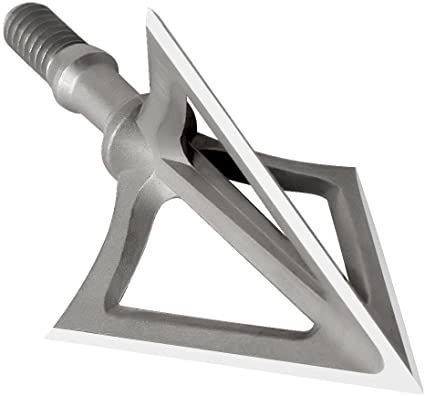
Bullseye:
The middle or central area of a round target, often for which a greater number of points may be scored when hit. The iconic archery target contains a series of concentric circles, with the innermost circle being the bullseye. The bullseye is 10 points in Olympic archery.
- 1 ring & 2 ring – white
- 3 ring & 4 ring – black
- 5 ring & 6 ring – blue
- 7 ring & 8 ring – red
- 9 ring, 10 ring & inner 10 ring – gold

Butts:
This term refers to a practice field with mounds of earth used as targets, originally in medieval England. Initially, these mounds of earth held a target such as a straw ring upon them. Eventually the term came to refer to the area or field where these mounds of earth were located.
Under various monarchs, such as King Edward III, it was mandatory for all able-bodied men to practice archery weekly. This was to ensure the king would have competent archers at all times for his military campaigns. Many men would be found practicing at the butts on the weekends during these times.
Button:
Other names include “plunger”, “plunger button”, or “pressure button”. This is a small spring-loaded device in the shape of a small cylinder. The cylinder contains a spring that acts on the pressure the arrow exerts on the side of a modern recurve bow when it is released. The idea is best conveyed in video format.
C
Cast:
The distance an arrow travels. More specifically the distance a bow shoots an arrow.
Centerline:
A line runs down the length of the bow from limb tip to limb tip, exactly in the center of the width of the limbs. Many modern bows (recurve and compound) have sight windows, or areas of the bow removed so that the arrow can be shot so that it is directly perpendicular to this line.
Center Serving:
The center serving refers to a protective covering at the middle of the string that is wound where the arrow is notched. This covering helps protect the string and increase its longevity. Nocking and handling the string repeatedly in the center can cause some wear and tear so some additional protection in this area is considered a good idea.
Centershot Bow:
Most if not all traditional bows in ancient and medieval times had the arrow rest up against the bow. Since this results in the arrow being slightly offset from the centerline of the bow, some experience and practice are required to get a feel for the bow and arrow behavior so that the archer can shoot consistently and accurately.
A center shot bow has some material removed from the center of the bow to provide for an arrow rest or arrow shelf. The arrow will now be positioned directly in line with the string and the center-line of the bow. This is a feature of many modern recurves and compound bows.
Clicker:
A clicker is another ingenious yet simple device that is a feature of many modern bows. It consists of a small protrusion, typically metal, that is attached to the riser or middle section of a bow. It calibrated by the archer to be in contact with the arrow up until the tip of the arrow passes the protrusion, indicating to the archer that they have reached full draw. When this happens there is usually a subtle clicking noise and hence the name.
The clicker ensures that the archer is shooting their arrows at a consistent draw length which means a consistent amount of force is applied to the arrows upon release. Consistency is a key to archery.
Clout Archery:
A type of long-distance target archery. A flag or other marker, known as the clout is placed at a specified distance and the archer(s) take turns shooting at this marker. Points are scored according to how close the arrow lands in relation to the clout.
A typical round of clout shooting consists of three dozen arrows, shot in ends of 6 arrows. Tournaments can consist of a double clout round, in which a total of six dozen arrows is shot.
Typical distances vary but most are around 100 meters.
Cock Feather:
A common fletching arrangement consists of three feathers placed 120 degrees apart. One of these feathers with being perpendicular to the nock. This is the cock feather. This ensures that the other two feathers will have maximum clearance and minimal interference with the bow as the arrow moves past the bow.
The cock feather is typically a differently-colored fletch that indicates proper arrow alignment on the string (a.k.a. index feather).
Composite Bow:
A composite bow, as opposed to a self bow (a bow made from a single piece of wood or other homogenous material), is made, like the name suggests, from a composition of a variety of materials.
The most notorious composition are those of the nomadic mounted archers and their composite reflex bows. The materials used are a wooden core, an animal horn on the belly, and sinew on the back of the bow. These different materials act on a stressed bow in different ways affecting the performance of the bow.

Compound Bow:
A compound bow is a modern bow that uses a system of cables and pulleys to achieve what is known as let-off. This allows for the weight of the draw to drop off at the full draw length. The main advantage of this characteristic is that the archer can comfortably hold the bow at full draw for extended periods of time which can be beneficial in hunting situations.
This bow design was first developed by Holless Wilbur Allen in North Kansas City, Missouri in the late 1960s. It was registered for a patent in 1969 and the rest is history. This type of bow is the dominant bow used in the United States of America.
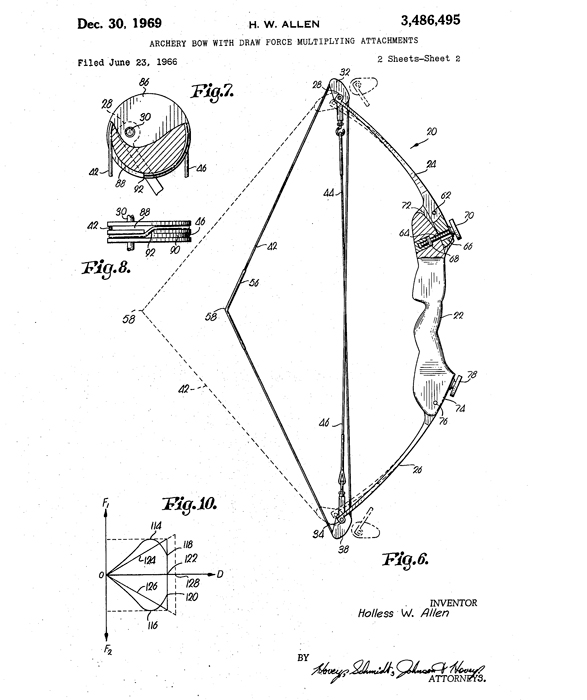
Core:
The core refers to the innermost structural material in a composite bow. Cores are typically made from a variety of woods. Bamboo is a popular core material in Asia.
Compressed Shaft:
This refers to an arrow shaft that has been compressed along its length. This is done to increase strength and straightness.
Cordovan:
Cordovan is a type of leather. Specifically, it is leather that comes from the rear end of a horse that has a subtle and smooth texture. In terms of archery, it used in the construction of shooting gloves and tabs.
Crest:
A crest or cresting are bands painted on an arrow to allow the arrow to be more easily identified. In addition, it can add to the aesthetics of an arrow. In ancient and more specifically medieval times heraldic markings on an arrow were used for identification or design
The variations and possible designs are limited only by the arrowsmith’s imagination.
Crab Bow:
This term refers to an Asiatic composite reflex bow used by the Mughals of Northern India. It has an extreme reflex and the limb tips touch or overlap when the bow is unstrung. See our article on the Mughal bow here.

Crossbow:
A form of a bow that is mounted on a stock. This type of bow shoots projectiles called bolts or quarrels. The bow-like assembly mounted across the stock is known as a prod. The stock is known as a tiller.
The crossbow is drawn back (in some cases with mechanical aides) and locked at full draw. This allows for the crossbowman to have the crossbow in a ready-to-fire position until they see fit, without tiring. Crossbows can have immense draw weights (several hundreds of pounds) as compared to ordinary bows.
The main disadvantage is the rate of fire is slower than a skilled conventional bowman as it takes longer to load and span or draw the crossbow.
The earliest crossbows were developed in ancient China around the first millennium BC and have been used widely in warfare in the region since this time.
Crown:
The nock end of an arrow where cresting and paints are applied
Cumans:
The Cumans were a nomadic Turkic confederation of tribes. They were known by many names, one of the more common ones being the Cuman-Kipchaks. They held dominion over a large area from the borders of Hungary on the eastern fringes of the Danube, to modern-day Kazakhistan on the borders of China.
The Cumans were expert horsemen and archers, who fought with many fierce rivals in the 1100s and 1200s including the Mongols under Ghenghis and the Rus. Check out our thorough article on the Cumans here.
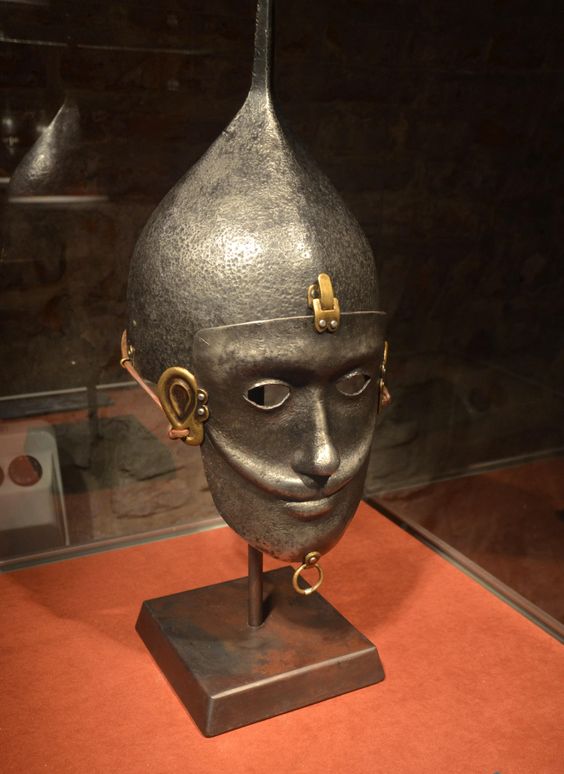
D
Dacron:
Dacron is a common modern string material for bows. The technical name is a mouthful: Polyethylene terephthalate. Dacron is the brand name registered in the USA for this material. We use it, no major complaints.
Dead Shaft:
An arrow without any life/spine. This would fly slowly. Find a better arrow to show with, please.
Decurve Bow:
A bow design that features limbs that bend or curve towards the archer. This is opposite to a recurve bow which has limb tips that bend or curve away from the archer. See our definition for our term “recurve” for more clarification.
Delamination:
Because composite bows consist of layers of different materials, these layers may be referred to as laminations. In fact, a whole sub-species of bows exist called laminate bows. These layers are compressed together, bound by adhesives and pressure. Sometimes these layers are not bound together firmly enough and they can come apart. This is known as delamination.
Die Cut Feather:
Feather shapes for fletching arrows come in a variety of shapes and sizes. Feathers that have been cut to a specific shape with the use of a ‘cutting die’ are referred to as “die-cut feathers:.
Director of Shooting:
The equivalent of a referee or umpire in other sports. The director of shooting directs the shooting in a tournament. Also called a ‘Field Captain’. The director of shooting may also just be the individual charged with directing shooting during leisurely archery practice. It is important to assign such a role as flying projectiles can be dangerous. There must be order, peace, and precaution. The director or captain is charged with the duty of maintaining these things during shooting.
Dished Grip:
A hollow grip on the bow for facilitating the recurrent hand placements over the bow.
Draw Check (tool):
A tool or device used to adjust and/or calibrate one’s draw. These devices typically consist of a wrist type draw and release aid which is primarily used by composite bow archers. The key difference between the draw check tool and an actual release aid of the wrist strap variety is that there is no mechanism for releasing the string. Therefore the chances of dry-firing are very low and the archer can just focus on their draw technique and form.
Draw Force Curve (diagram):
A draw-force curve or graph (force-draw graph) is developed by measuring the force on the bowstring at various incremental distances along the draw path of the bow. Typically, the force is measured with a weight scale at 1-inch increments to full draw (28 inches). Below is an example of an f/d graph for three different bows.
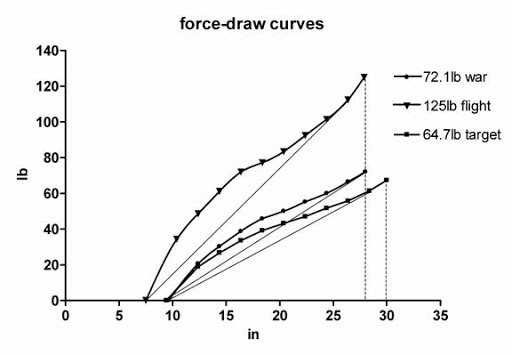
Calculating the area under the curve produced by an f/d diagram gives the potential or stored energy that is available to restore the bow limbs and propel the arrow forward.
For more information please see our article titled “How to Measure Draw Weight of a Bow” or our blog article titled “Physics of Archery”.
Drawing Fingers:
These are the fingers or digits which the archer uses to draw the bow. There are many types of draw. A very common draw, known as the Western draw or Mediterranean draw used the index, middle and ring finger. The index finger is positioned above the nocked arrow, while the middle and ring finger pull on the string from beneath the nocked arrow. For a more thorough article on drawing a bow, visit our article here.
Daikyu:
A Japanese longbow. The daikyū (大弓) and the shorter hankyū (半弓) are the two ancient traditional bows of Japan, used extensively by the samurai. The daikyu is used in the practice of kyūdō, kyūjutsu (traditional Japanese art of archery) as well as yabusame which is traditional Japanese mounted archery. Check out our article on traditional Japanese archery here for more!
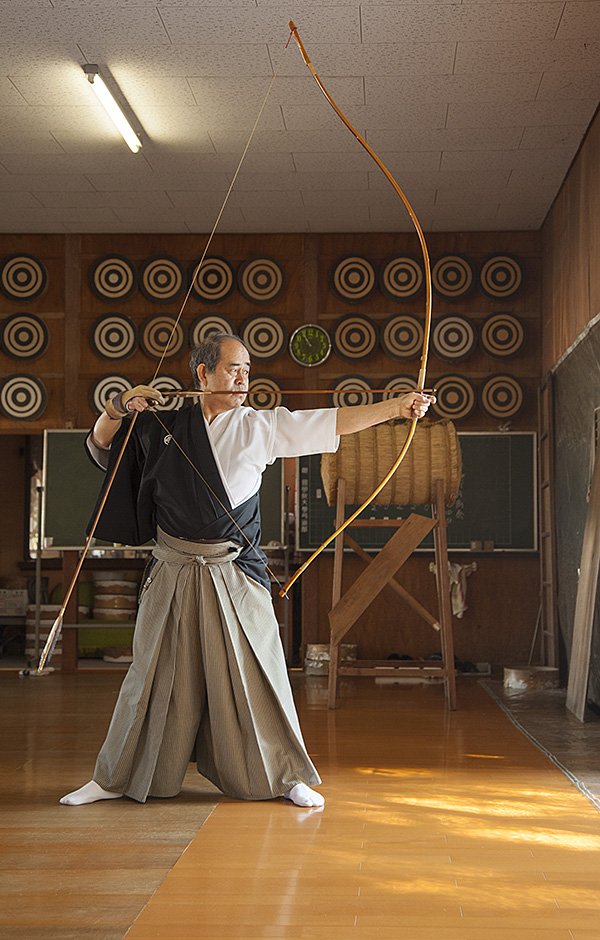
Deflex Bow:
A type of bow that features the entire length of the handle and limbs curving toward the archer. This has never been a very popular type of bow and it is currently not widely used. The deflex nature of a bow like this (as opposed to a reflex bow, with limbs curving away from the archer), makes for a relatively poor performing bow.
Deflex-Reflex:
A bow design that features limbs that curve off the riser back toward the archer, and then reflexes back toward the limb tips. A very stable and efficient design. Many bows feature this design and are quite common in modern times. See diagram above.
Drawing:
This could be considered the main activity of the archer. Drawing refers to the act of pulling the string that is attached to the bow
Draw Length:
Refers to the length or distance the archer draws their bow. This is of course dependent on the physical size of the archer and varies greatly from person to person. This distance is typically measured from the inside of the handle (belly side) to the string.
A standard draw length of 28 inches is sometimes used as a place to measure draw weight. For example, if you are told that a bow has a draw weight of 50 pounds, this typically means that the archer would feel a force equivalent to 50 pounds when the bow is drawn out to 28 inches.
An easy calculation for determining your draw length is measuring your wingspan (distance from fingertip to fingertip with arms and hands outstretched) then dividing by 2. This calculation will give you a good starting point but drawing your bow and seeing where your natural limits and comfort level is would be an even better way to determine your draw length.
Draw Weight:
How heavy is that bow? A common question amongst certain archery enthusiasts. Draw weight refers to the number of pounds of force required to draw a bow to its draw length. The number is usually measured in pounds at a standardized 28 inches draw length.
Draw weights can be as low as 10 pounds for a child’s bow and exceed 100 pounds for a warbow.
Dry Firing:
An innocent enough mistake the uninitiated may make. The results could however be damaging to the bow and people alike.
Dry firing refers to drawing a bow and loosing it without an arrow nocked. This can be potentially dangerous and damaging because a bow is basically an energy storage and transfer device. The energy is stored in the limbs of the bow and transferred through the string into the arrow. Without an arrow in place, the bow itself must absorb the energy that is released. Bows are not designed to do this and the forces involved could rupture and split the bow, rendering the bow practically destroyed as well as potentially sending shards of material such as wood flying through the air with great velocity. Dry firing is an ignorant newbie-ass thing to do and now that you have read this you will not do such a thing.
Dry Loosing:
See previous entry on dry firing. Dry loosing refers to the loosing of the string of a bow without an arrow on the nock, potentially damaging the bow and injuring people or possibly even nearby squirrels
.
Dominant Eye:
The eye on top of the 13 stepped pyramid on the back of the one-dollar bill. No just kidding that’s another kind of eye.
Everybody has a dominant hand, arm and eye. It is just the way our nervous systems and brains are wired. Don’t blame me, it’s just like this. Maybe blame God. I don’t know.
Anyhow here is an easy way to determine your dominant eye. Pick an object about 10 to 20 meters away from you. Point at it with your dominant hand (you should already know which hand that is). Then close one eye and see if it lines up with your finger and you can see it pointing at the object. If it is slightly off, close this eye and with your finger still pointing at the object open your other eye. Whichever eye lines up with your pointed finger and the target object is you dominant eye.
E
Edward III of England‘s Declaration of 1363:
A military decree or declaration made by Edward III of England to ensure that his subjects kept up their archery practice. He needed strong and well-seasoned archers for his military campaigns. Here is a little excerpt.
“Whereas the people of our realm, rich and poor alike, were accustomed formerly in their games to practise archery – whence by God’s help, it is well known that high honour and profit came to our realm, and no small advantage to ourselves in our warlike enterprises… that every man in the same country, if he be able-bodied, shall, upon holidays, make use, in his games, of bows and arrows… and so learn and practise archery.”[24]
End:
An end refers to a round of shots typically in an archery competition. The reason it is called an “end” is simply due to the fact that the targets are usually placed on either end of the field. Arrows are shot, then the archers collect them and proceed the next round or end by shooting at the target on either side or end of the field.
End Loop:
The term “end loop” simply refers to the loops at the ends of a bowstring. A bowstring may be constructed in a number of ways, but they all must have some loop or means of being secured to the limb tips. Some bowstrings, such as those of the traditional Turkish bowstring have a separate loop secured to the bowstring proper.
English Longbow:
A longbow popularized by the medieval English, particularly during the Hundred Years War fought with France. Once the invading Anglo-Normans suffered heavy casualties during their attempted subjugation of Wales at the hands Welsh longbowman, the potential of this long-range weapon was realized. The longbow was a feature of the English armies ever afterwards.
The English longbow is a selfbow (made from a single stave of wood) fashioned from yew, although ash and elm were used as well. The English had used up much yew in the medieval era and the bow wood had to be brought in from mainland Europe.
The bow is usually around 2 meters in length, and draw weights were quite heavy by modern standards, being around 100 pounds or much more.
For more on the English longbow, you should check out the following articles:
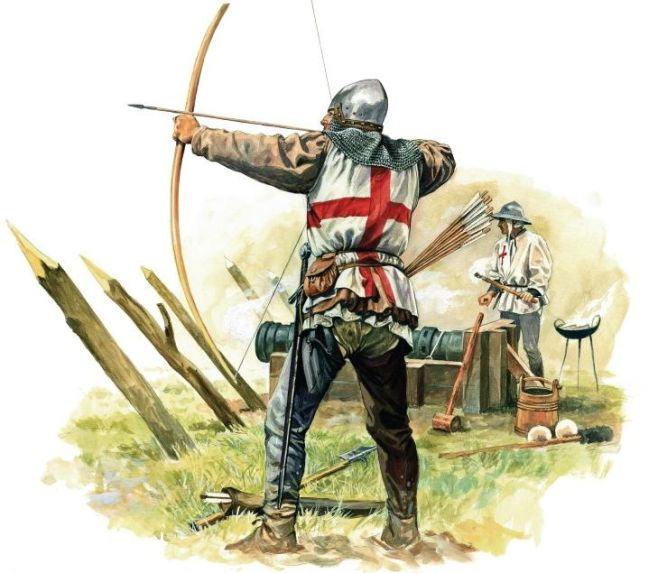
Eye:
An opening at either ends of the bowstring. Also known as an “end loop” or just “string loop”.
Egyptian bow:
The ancient Egyptians have a long history with the bow and arrow. Over the several thousand years of thier history, the Egyptians used archery as a means of hunting and waging warfare. Simple self-bows evolved into composite bows with an triangular or angular shape. Most Egyptian bows are considered angular bows because of their shape.
The Egyptians took archery very seriously, and the pharoahs were quite involved in the activity. The young Tutenkahmun was indeed buried with several bows after his untimely death. Check out our page on Egyptian archery here for more.
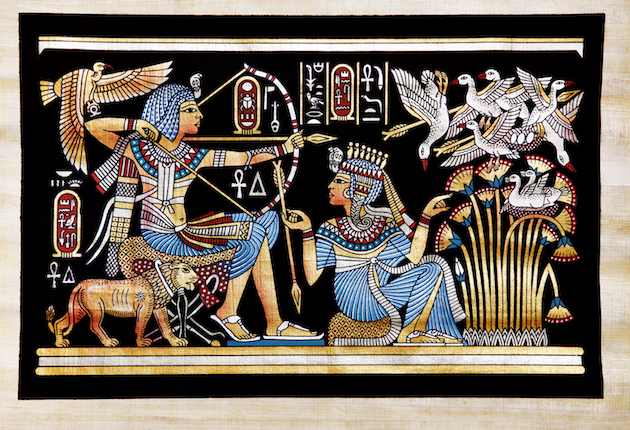
F
Face:
Another term for the belly of the bow. When the archer takes bow in hand, the side of the bow that faces them is known as the belly or face of the bow.
Fast Flight:
A type of string for a bow. The term is a brand name of a string made by the company Brownell. The main desireable characteristic of fast flight is that is doesn’t stretch as much as some other materals or bowstring brands such as dacron. This rigidity and strength allows for more energy to be transfered to the arrow from the bow upon release. This energy efficiecy is the reason why it is called “fast flight”.
Fast flight is used mostly on traditional bows as compounds require materail with even more rigidity. Kevlar and various rigid plastics are used with some compounds.
Fadeout:
The term “fadeout” refers to the shape of a bow limb. The wood or bow materal tapers or “fades out” into the limb from the riser.
Field Archery:
Field archery is great fun! The term refers to archery that typically takes place outdoors, where the archers shoot at various targets (sometimes relembling game animals) at unmarked distances. This is usually done in a field and hence the name. Although lightly wooded areas and some mountainous terrains have been known to be used. Most field archery is competitive, yet there should be little to stop you from setting up your own course for yourself if you have space and targets!
Field Tip:
A practice head for targets. The Field tip is similar to the bullet-shaped target tip, but it has a distinct shoulder or ridge about halfway up the arrowhead. Field tips are designed for practice target archery. They have a similar weight as broadheads but do not cause as much damage to targets and are relatively easily extracted
Feather:
Feathers have been used for fletching since time immemorial. Sharpened sticks with now fletching were perhaps first until some genius found a way to make the arrow even better and more stable. Three feathers, cut in half and spaced equidistant (120 degrees) apart have been used in traditional archery as the most common configuration although four feathers have also been used historically.
Feet per Second:
Speed is the calculation of distance divided by time. Feet and seconds in terms of units of measure are at a reasonable enough scale for us to use them in calculating arrow speed. Some highly efficient traditional bows can exceed 200 feet per second and modern compounds can approach 300 feet per second.
Finger Pinch:
Finger pinch is typically experienced when drawing a bow with bare hands or fingers. The pressure on the fingers can be quite uncomfortable and after repeated strain can cause some nerve damage. This is why protective equipment such as shooting gloves of finger tabs are recommended.
Finger Tab:
Made from a small, flexible yet sturdy material, typically leather, a finger tab protects the archer’s fingers from the dreaded finger pinch. The tab is usually specially shaped to cover the inside of the index, middle, and ring fingers for archers shooting Mediterranean style.
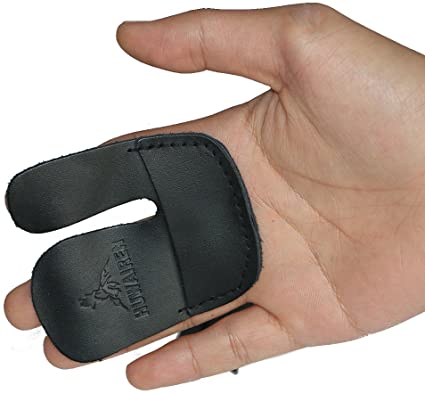
Fistmele:
This term is synonymous with brace height. Specifically the brace height of a northern European bow or English longbow. The word mele is derived from the Saxon word for measure. Fistmele refers to the length of an average clenched fist with the thumb extended. This distance, which is around seven inches is used to check the brace height.
Ferrule:
A ferrule is the part of an arrowhead that fits over the arrow shaft. It has an internal diameter equal to the diameter of the arrow shaft so it can fit over it securely.
Flatbow:
A bow with a rectangular cross-section. Because of the rectangular cross-section of a flatbow, the stress of the limbs as they bend is more evenly distributed than that of a rounded cross-section bow. This makes flatbows quite sturdy. They are usually self bows, that are made from a single stave of wood. Several native American tribes, Inuit, and peoples of northeastern Europe used bows of the flatbow variety.

Fletching:
The stabilizing fins or vanes of an arrow. Traditionally made of feathers, fletching is now commonly made of synthetic materials.
Fletcher:
An old craft and trade. A fletcher is someone who makes arrows. This was a desirable skill in many places and at various times in human history, especially if one intended to go to war and shoot a large volume of arrows.
Fletching Clamp:
Part of a fletcher’s tool kit that helps him attach the fletchings to the arrow. The clamp holds the fletching in place while it is being attached to the arrow shaft.
Fletching Jig:
A jig which a fletcher or arrowsmith used to secure the arrow shaft and fletching while the arrow is being put together.
Flex:
Flex, in terms of archery, refers to the amount of bend an arrow shaft provides. This is somewhat synonymous with spine. The greater the spine the less flex an arrow will have.
Fiberglass:
A common material used in the construction of modern bows. Fiberglass is basically plastic, reinforced by strands or fibers of glass. It is relatively new material as the first US. patent was issued in 1880. Fiberglass can behave similar to many types of wood and is very cheap to mass-produce.
Footed Arrow
These arrows are formed with two types of wood fitted together. Typically the half or third of the arrow closer to the arrowhead is made of hardwood and the rear of the arrow is made from softwood. Reinforcing the area of the arrow in the location where it is more likely to break helps ensure it will survive the impact.
Follow-Through:
The act of continuing to move after the arrow has been released. This should be done naturally to dissipate some of the left-over energy held as tension in the body. See khatra under the K section.
Flight Archery:
Flight archery is distance shooting. The point of flight archery is to see how far an arrow can travel. This is done competitively and was a national past-time in Ottoman Turkey. See our article on flight archery here.
Flight Arrow:
An arrow specifically designed for use in flight archery. They are usually quite small and barrelled for aerodynamics. See our article on flight archery here.
Flight Bow:
A bow designed specifically for flight shooting. They can be heavy in terms of draw weight and very efficient.
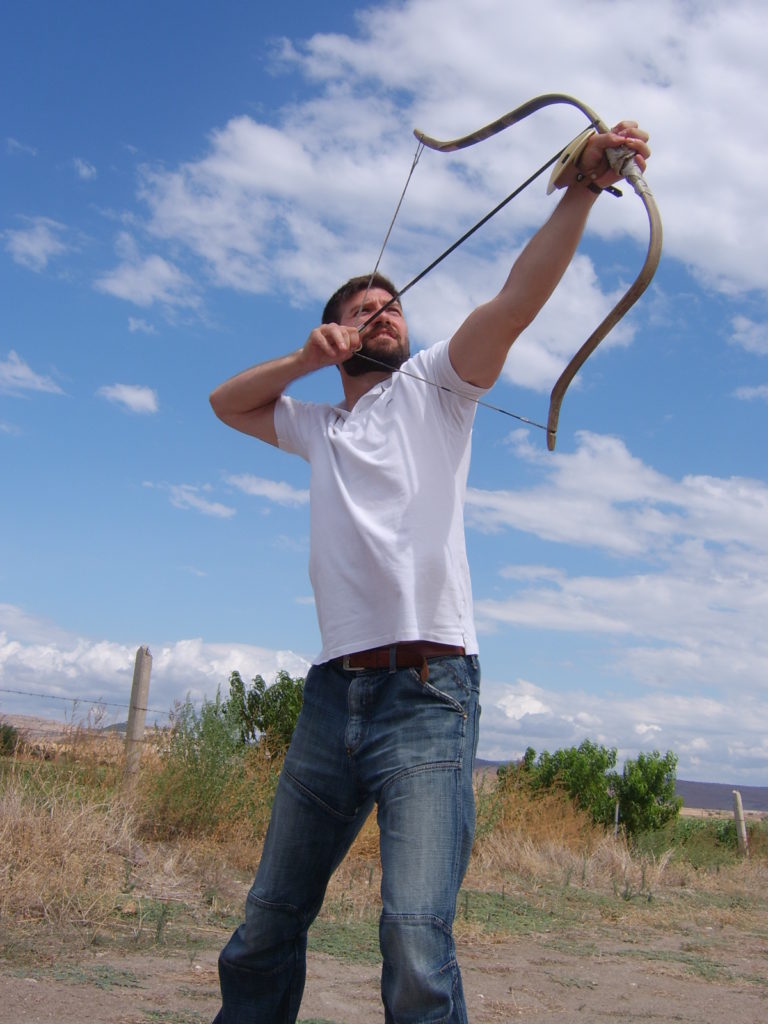
Fishtailing:
The wobbling left and right of an arrow during its flight. This is due to the mechanics and physics of arrow flight. Because the arrow is flexible and force is being applied to it via the string, the arrow will dissipate some of this force or energy in its wobble.
Flu-Flu Arrow:
A specially designed short-range arrow. The fletchings of this arrow are designed to show down the arrow. These types of arrows have been used to hunt birds.
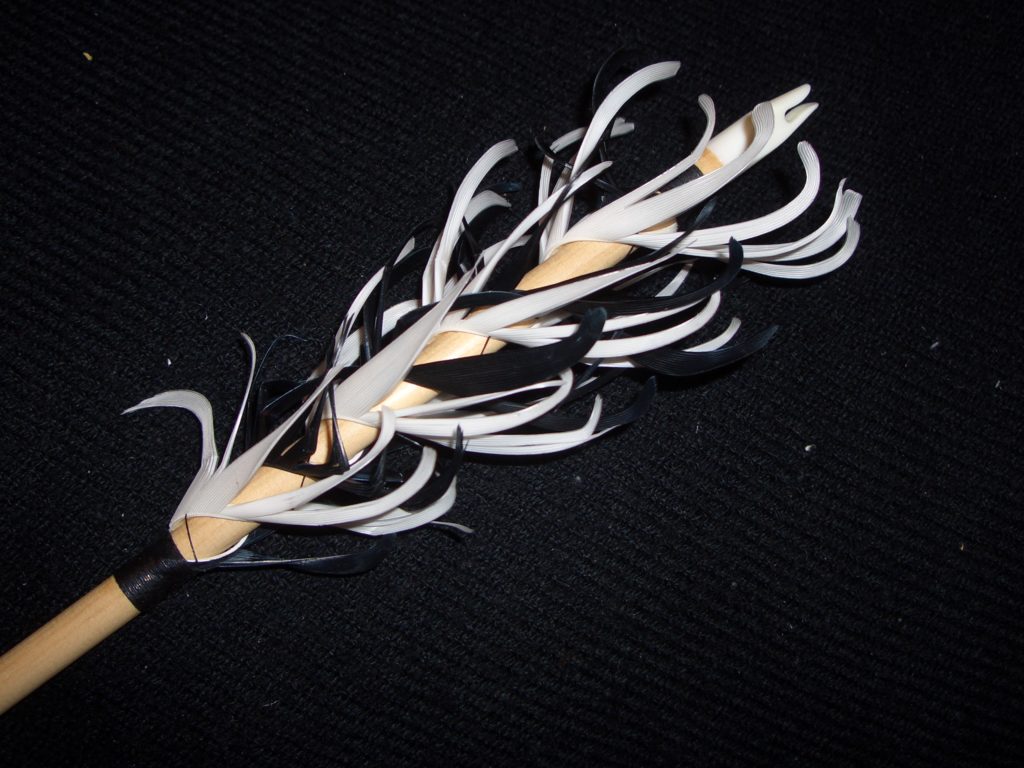
Foot Markers:
Markers that denote the foot positions of the shooter at the shooting line. This is for ensuring the constant foot position.
Fred Bear:
Fred Bear (March 5, 1902 – April 27, 1988) is regarded as a pioneer in the traditional bowhunting community. He traveled the world hunting, manufactured bows, and produced much content on the topic of archery and bowhunting.
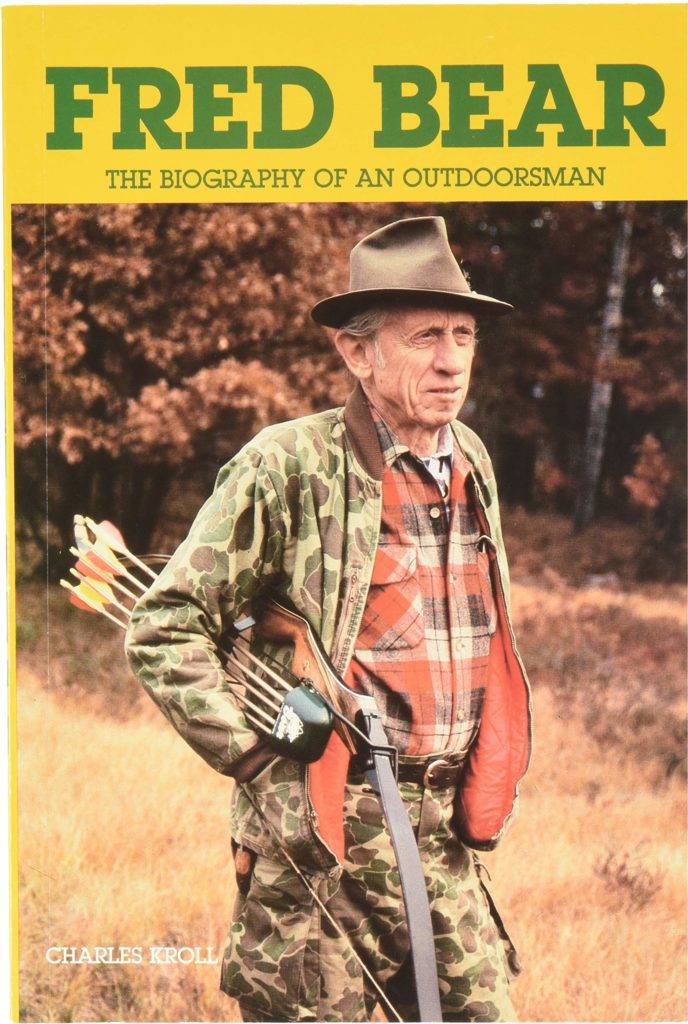
G
Gungdo
The Korean practice of archery. Korea has a long and fascinating history and relationship with the bow and arrow. The first recorded use of archery in Korea was in the first century A.D. Since these times, the Koreans have had to defend their peninsula from nomads, Japanese pirates, and encroaching Chinese imperialists. The Koreans still hold archery in high regard and perform well at the international competitive level and the Olympics. Check out our page on traditional Korean archery here.
Gakgung:
The traditional Korean reflex horn bow. These bows are relatively small and composed of the three essentials of all composite Asiatic reflex bows, namely a core of wood (bamboo in this case), a back of sinew, and a belly of horn. They are extremely reflexed and when unstrung the tips can almost touch or even overlap. Quite beautiful specimens if you ask us. Once again, check out our page on traditional Korean archery here.
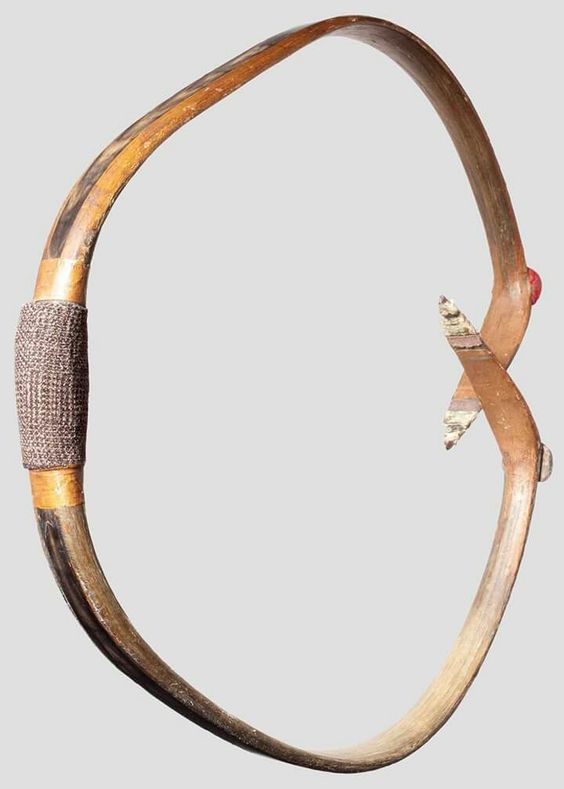
Glove:
A glove or shooting glove’ is a three-fingered apparatus that fits over the archer’s draw hand. The glove protects the three main digits (index, middle, ring) from the finger pinch. Typically these gloves are fashioned from leather.
Grain:
A standardized unit of measurement used when weighing the arrow and its various parts. One grain is equivalent to 0.0647989 grams just in case you are inclined towards the metric system.
Grains Per Inch (GPI):
Another industry standard for measuring the weight of an arrow. The grain per inch is a standardized non-metric measurement unit of linear or linear mass density. Most bow manufacturers recommend a minimum GPI for a certain draw weight of a bow.
Grip:
Synonymous with the handle of the bow. The grip is the central portion of the bow handle which is held by the archer. Various shapes and designs exist, from the basically non-existent like on an English longbow to very elegant and ergonomic like on some modern recurves.
Ground Quiver:
A quiver that rests upright on the ground. Convenient when engaged in target archery. Sometimes people get creative with what they use as ground quivers. I think pylons work well.
Grozer (Csaba):
A Hungarian bowyer specializing in hand-made historical and traditional bows. Check out his site here.
H
Huns:
They stormed out of central Asia in the 4th century A.D. and caused much havoc in medical Europe at their height under the leadership of the infamous Attila the Hun. They fought on horseback, with their weapon of choice, much like all other Eurasian nomads, the Asiatic composite bow. Their bow was somewhat unique in its asymmetry and power. Check out our article on the Huns and their bow here.
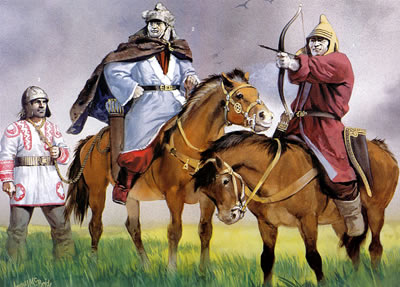
Hun Bow:
A powerful and asymmetric Asiatic composite bow wielded by the Huns. The weapon was seen as efficient and worthy of replication and use by the Romans after fighting with and against the Huns. Once again, check out our article on the Huns and their bow here.
Hungary:
The nation of Hungary has a long and interesting history with archery. So many people of the bow came and went through the country, The Huns, Bu.lgars, Avars, Magyars, Ottoman Turks. There has been a revival in the art of archery in Hungary as more people want to get back in touch with nature and their ancestry. From the archery school of Lajos Kassai to the bow makers of which there are plenty, archery does not seem to be going anywhere in Hungary anytime soon. Check out our page on the Magyars of Hungary here.
Hungarian Bow:
The Hungarian bow is in the family of Asiatic composite reflex bows. No fully intact bows have been recovered from the Conquest Period of the 8th & 9th centuries A.D. when the Magyar horde came into relations with Europe. However thin bone plates which were used to reinforce the handle and tips of the bow have remained in several burials and the brought shape and dimentinons of the bow could be identified.
The bow is a relatively large Asiatic reflex with non-contact siyahs, that is to say the string does not contact the back of the limb tips as in other bows of this family such as to Turkish, Manchu or Tatar.
For more on the Hungarian bow please see our article on the bow and the Magyars or Hungarians here.
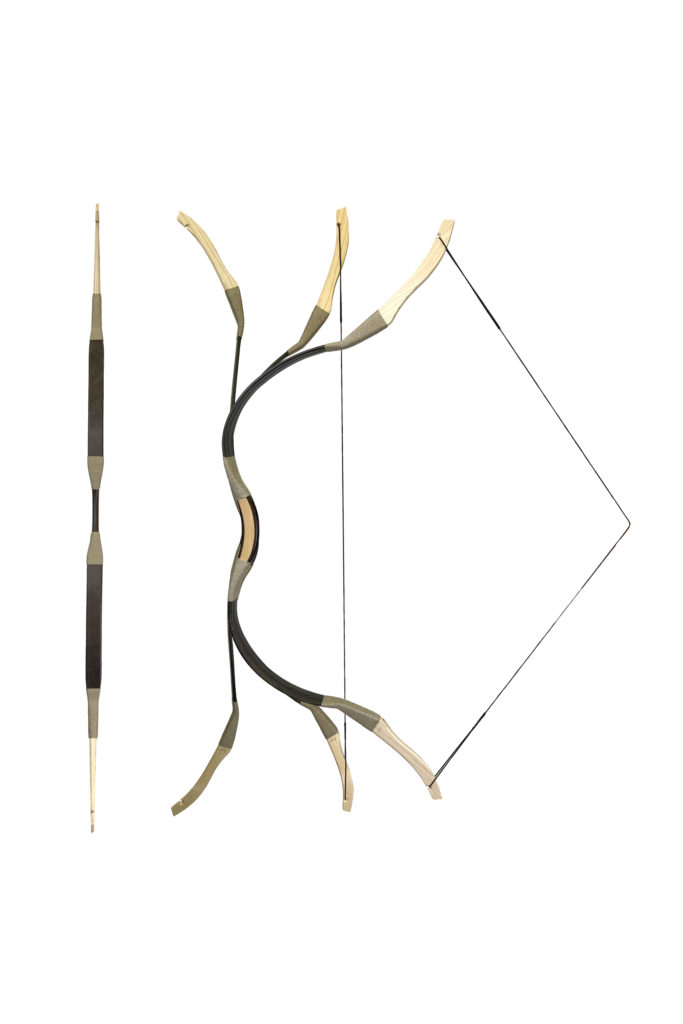
Hankyū:
A short Japanese bow. Like its larger cousin the daikyū, the hankyū is an asymmetric Japanese bow or yumi. Hankyū means “half-bow” and as this name implies it is roughly half the length of the longer version. The length of a full yumi, the daikyu is over two meters long (212–245 cm) and the hankyu is roughly 1 to two meters in length.
Hybrid:
This term refers to a bow with characteristics from different subsets of bows. For example, this term may be used to describe the combination of a recurve and a longbow, also known as “reflex-deflex”.
Head:
Another name for the front end of an arrow; also known as the point, arrowhead, or tip.
Hen feather:
Another name for the feathers that are in line with the nock. This is opposite to the “cock feather”. This is the name given to the shaft feathers based on a misunderstanding of cock (leading) feather. See the entry for “cock feather” for more.
Horse archer:
Also known as a mounted archer because a horse was the most common beast of burden used as a platform for archery in the past. Although elephants and camels were also used. A horse archer is an archer mounted on a horse.
Horse archery:
Archery conducted on the back of a horse. This is nothing new and has been done since ancient times. The ancient Assyrians and Scythians were among the first people that we know of who decided to mount a horse while shooting bows.
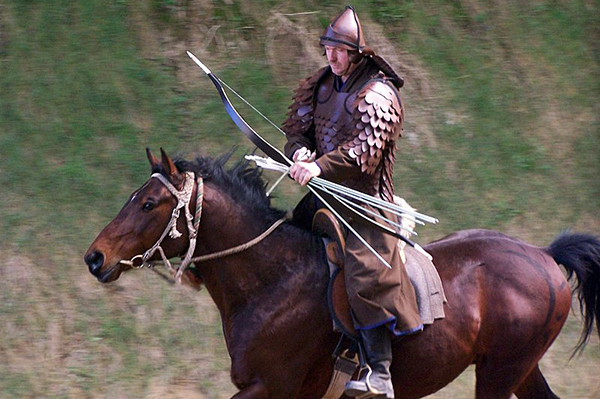
Heartwood:
The core wood of a tree. This is typically harder and denser that the outer layers of the trunk which is known as the sap wood.
Helical Twist
A type or method of fletching whereby the feathers spiral around the arrow shaft. Helical fletching allows the arrow to spin in flight, stabilizing the flight much sooner than a straight fletch. This may be very desirable and effective in hunting or medium to long-range shooting where high wind or crosswind can occur.
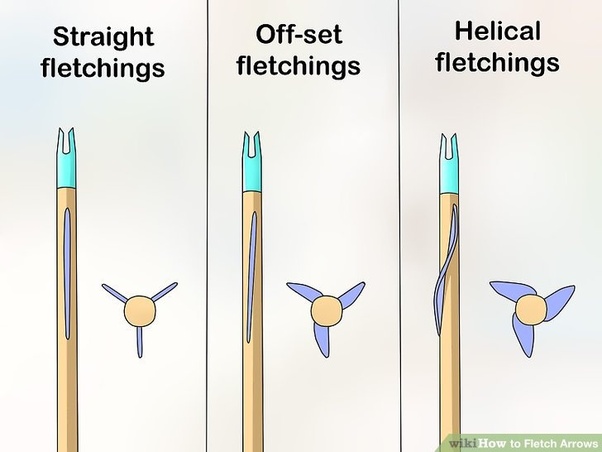
Handle:
The central part of the bow. This is where you put your hand on it. Notice how the word hand and handle are very similar? Coincidence? No.
The limbs of the bow will be attached to the handle or grip. This is the non-working part of the bow, meaning that it does not bend and store energy, or hold the string in place. It does nothing, other than wait for you to put your hand on it and go to town.
Hand Shock:
Hand shock refers to the vibration that is felt in the drawing hand while releasing an arrow from the bow. Hand shock is generally undesirable as it leads to an unpleasant shooting experience if it is too pronounced. Maximum vibrations tend to occur between so-called nodes, where very little to no vibration occurs. These nodes are usually about a third and two-thirds along the length of a bow.
Bowyers use various materials and bow geometries to attempt to address the issue of hand shock
Hanging Arrow:
A slow-flying arrow with not much energy behind it. When the arrow hits the intended target, it does not penetrate the target but droops from its spot.
Heel:
The process of applying pressure using the heel of the bow hand on the lower end of the handle while drawing and shooting.
High Braced:
When the distance from the grip or handle to the string of a strung bow is more than 7 inches. This usually means the string is too short. A high braced bow or an underbraced bow will not perform as well as a properly braced bow. There is a sweet spot or window of desired brace height which promotes optimal performance.
Hinged Bow:
Similar to a take-down bow that completely separates into two halves at the handle. A hinged bow has a hinge fixed at the back for facilitating easy transportation.
Hit:
A hit can be a good thing, in archery as well as other activities. A hit refers to an arrow that penetrates into one of the scoring regions on the target’s surface. The more hits the merrier.
Holding:
Holding takes place at full draw. Holding is the maintenance of the bow and arrow in a constant position during full draw just before the release. This may require substantial strength and stamina depending on the weight or type of bow. Compound bows were designed specifically to allow for easy holding because the actual weight felt at full draw drops off due to the cams at the bow tips.
Home:
Where you live. In archery “home” may refer to an arrow that is fully drawn and set to be shot. Then the arrow leaves home and goes on an adventure.
I
Index fletching:
The index fletching is the same as the “cock feather” ( see “cock feather). It may be a differently-colored fletch that indicates proper arrow alignment (a.k.a. cock fletching)
Index Feather:
Same as the “cock feather”. This is a feather at right angles to the cut of the notch and is differently colored than the other two feathers.
Idler Wheel:
The idler wheel will substitute the top cam with a wheel. The Idler wheel does not perform an active job of allowing a compound bow to let off its weight when it nears full draw. The idler wheel, like the name suggests, is idle. The idler wheel is present on compounds with only one cam.
Insert:
The insert or arrow insert is a small, typically aluminum cylindrical device that fits snuggly inside of the front part of a modern arrow. This insert is threaded on the inside and allows for a variety of arrowheads to be threaded into this insert. This is a convenient way to swap arrowheads.
Instinctive Shooting:
Instinctive shooting utilizes only hand-eye coordination, body alignment, and muscle memory to facilitate the shot. No visual alignment of aiming markers is used. This type of shooting takes much practice to master but let us assure you when done properly, it looks and feels damn good. Instinctive archery is especially emphasized in some schools of mounted archery. There is not much time to aim the traditional way when on the back of a galloping horse.
Ishi:
The last of the Yahi indigenous peoples of the American southwest. One of the last “wild” natives in the region as all of his other tribespeople were killed off. He was doctored by Saxton Temple Pope, regarded as one of the fathers of American bowhunting. Ishi was an accomplisted archer himself as this skill was taught and respected amongst his tribesmen.
J
Judo Point:
A special type of arrowhead with small springloaded pincers that close when the arrow strikes. The pincers help the arrow grab onto grass or other vegetation so it won’t get lost in the shrub as easily. It is used mostly for target shooting or small game hunting.
Jannisarry:
The Janissaries were the cream of the crop of the Ottoman armies of the late medieval ages. Most were captured as small children and trained as soldiers from childhood. They were professional soldiers who know only loyalty to the sultan and war. They were trained in all types of weaponry including early firearms. However, the Ottoman bow was also highly favored and used. They were expected to be expert marksmen.

Japanese Bow (yumi):
The Japanese bow or yumi is quite a unique bow. The main feature of the bow is that it is highly asymmetrical, with the handle being about a third of the way up from the bottom of the bow. They are made from bamboo and have been used since the early days of the samurai. Please see our article on traditional Japanese archery here for more.
K
Kassai (Lajos):
Lajos Kassai is a Hungarian mounted archer. He is credited as an instrumental figure in the revival of the modern sport of mounted archery. Having his own company which manufactures various traditional bows for the sport, he also invented the course layout and point system. He has his own style and archery school in Hungary which has spread to other chapters all over the world. Check out our article on Kassai here.
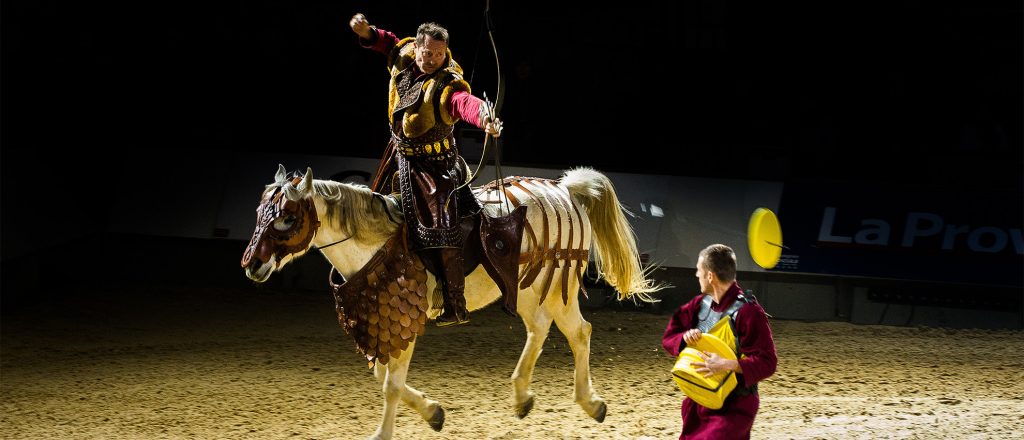
Khatra:
The original word is thought to be derived from Arabic, although it is used in both the modern Turkish and Hindi languages.
Khatra describes the natural follow-through of the bow hand upon release of the arrow. The Khatra technique is typically performed in one of two ways.
- Pressing the bow downwards and forward upon release.
- Pressing and/or turning the bow outwards, away from the center of the body upon release.
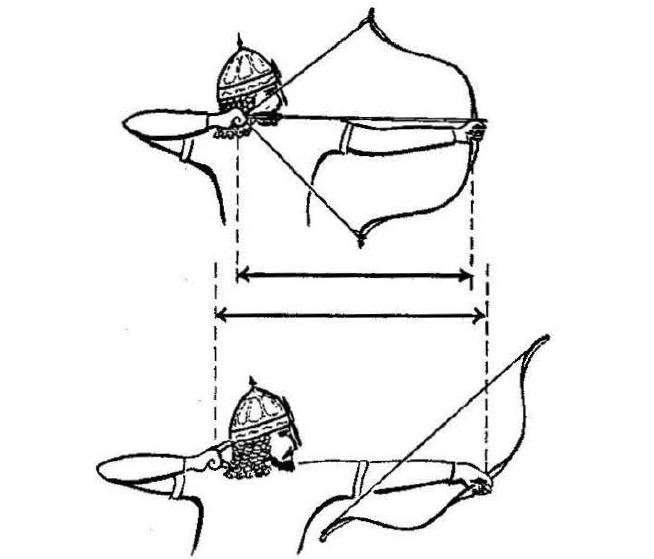
Please check out our more thorough coverage in our article on khatra here.
Korean Bow:
The traditional Korean bow is known as the gakgung in Korean. It is a relatively short Asiatic reflex with an extreme reflex of the limbs. The limbs can almost touch or overlap when the bow is unstrung. It is made from a bamboo core, with horn on the belly and sinew on the back. Please see our entry for gakgung in this glossary or our page on traditional Korean archery here.

Korean Archery:
The Koreans have been archers for quite some time, several millennia at least. It should come as no surprise then that they hold archery skills in high regard in Korean society. They perform well in modern competitive archery at the Olympics and have a traditional form of competitive archery that is till practiced to this day. Please see our page on traditional Korean archery here.
Kisser
A button device is used to indicate consistent vertical distance when drawing a bow. This is used on many modern compounds and recurves.
Kiss Button:
A point on the bowstring that the shooter’s lips touch when the bow is at full draw. This is to assure the stability and precision of the anchor point.
Kyūdō
The Japanese practice of archery. See our page on traditional Japanese archery here.
L
Longbow:
A tall wooden bow. approximately the same height as the archer, without significant recurve. Longbows may be self-bows, that is to say, made from a single stave of wood. The English longbow is the most infamous variety of longbow in history. They were made of yew and did quite a number on the French knights during the Hundred Years war of the middle ages. See our page on the English longbow here for more.

Loose
The release of the arrow from the bow by releasing the string with the draw hand. The loose or release is an important aspect of archery. All of the tension and pressure culminates at this crucial point, right as the string is let go.
Laminated Bow
A bow made from different materials laminated together, and hence the name laminated bow. The laminations can consist of many different materials, different types of wood, fiberglass, and resins.
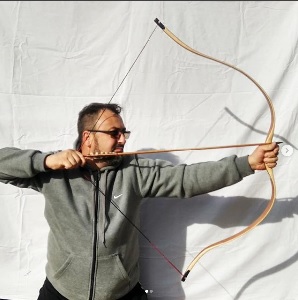
Limbs
The upper and lower arms of a bow. The limbs store the energy and transfer it to the string and therefore to the arrow. Limbs are curvy and sexy as all good limbs ought to be.
Longrod
A rod that is attached to the bow to dampen vibrations. These attachments are common on modern recurves and compounds.
Level:
Yes, believe it or not, bows have levels on them. My oh my how far we have come from a stick with a string tied to either end. The level acts as any other level you may find in a hardware store. It helps as an indicator for the archer to see if the bow is in a vertical position. Levels are commonly featured on compound bows.
Legolas:
Good old Legolas of J.R.R. Tolkiens “The Lord of the Rings”. He is a Sindar or Grey Elf of the woodland realm in Middle Earth, specifically Mirkwood. He is a great warrior with superhuman abilities and an archery expert. He has amazing vision and cat-like reflexes so he really lets those arrows fly.
Legolas Fletching:
A special cut or shape of feathers used by the Elves of Mirkwood including Legolas. People really enjoy the books and movies of the Tolkien universe so this type of fletching has actually become quite popular here in the real world.

Let Down:
Let down referees to the act of not firing an arrow. I know, it’s a real disappointment. You just nock the arrow, bring to bow to full draw, then slowly return it to the not fully drawn position.
Limb Twist
A condition where the limbs of a bow have been taken a set off centerline, or the middle lengthwise axis. This can occur for several different reasons, usually, because the bow is not correctly strung or stores strung incorrectly, or from a number of other abuses. It can typically be corrected.
Limb Dampeners:
A rubber or plastic construction is attached to the bow limb for the purpose of reducing the vibration felt in the limb after releasing the arrow. They are usually of a cylinder or ‘mushroom’ shape.
Limb Pocket:
A slot or pocket on the riser or middle section of mostf modern recurves that is shaped to accept the corresponding bow limbs and maintain correct limb alignment.
M
Micarta:
A dense fabric in a thermoplastic setting. Micarta is actually a brand name but for our purposes here it refers to resins or plastics used to reinforce the limbs of a bow.
Majra:
An overdraw device used in Turkish archery. It consists of a narrow channel that guides a short and small flight arrow. The device is indeed used for flight archery.
Mounted Archer:
An archer mounted on a horse or other beast of burden. Typically horses were used however camels and elephants have also been used in regions where they were plentiful. I wonder if anyone thought of using an ostrich. That would be cool. I would totally shoot a bow from the back of an angry Ostrich running full speed. Just saying

Mounted Archery:
Archery which is done while mounted on an animal, typically a horse. This form of archery was the main form of hunting and warfare on the Eurasian steppe.
Mongolian Draw
The act of drawing a bow with the thumb. Since the Mongols of the Eurasian steppe preferred drawing their bows using a thumb draw, the terms “thumb draw” and “Mongolian Draw” have become synonymous.
Mongols:
The Mongols made quite the name for themselves in war under their leader Temujin, later Ghenghis Khan. They were a formidable force indeed., hardened by life on the harsh steppe. Their preferred method of military engagement was mounted archery. They were known for their expert archery. See our page on the Mongols and their bows here.

Mongols bow:
The Mongol bow has gone through some changes over the centuries. Archery is still very much practiced in Mongolia today, although they use a Chinese-style Manchu bow. The bow used in Genghis Khan’s time was a smaller non-contact Asiatic reflex much like the Magyar bow. See our page on the Mongols and their bows here for more.
Magyars:
The Magyars consisted of several tribes from the Eurasian steppe who were, like many other peoples from this region, masters of the horse and bow. They rode into Europe in the 8th and 9th centuries wielding their powerful Asiatic composite reflex bows. See our page on the Magyars here.
Magyar Bow:
An Asiatic composite reflex bow used by the Magyars in the middle ages. See this glossary entry for “Hungarian bow” or see our page on the Magyars here for more!
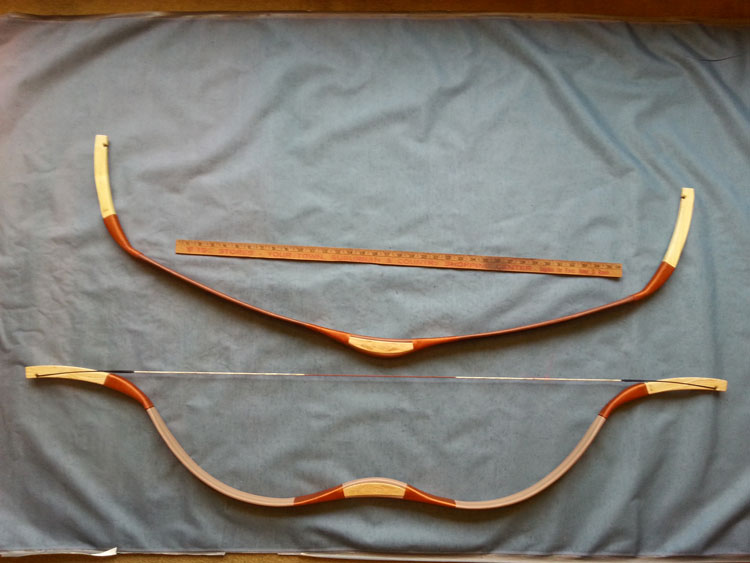
Mass Weight:
The real weight of the bow.
Mechanical Blades:
Two or more blades on an arrow point for opening an impact on the target. Usually used for hunting purposes.
Mechanical Release:
An instrument used for helping the archer to draw the bow and release the arrow.
Mughal Bow:
An Asiatic reflex bow was used by the Mughal Empire of India. The Mughal leader Babur was a descendant of Genghis Khan so you know they were into mounted warfare with bows and arrows. See our article on the Mughal bow here for more.
Manchu Bow:
A relatively large Asiatic reflex bow with large siyahs or limb tips. The bow also features prominent string bridges. See our page on traditional Chinese archery here.
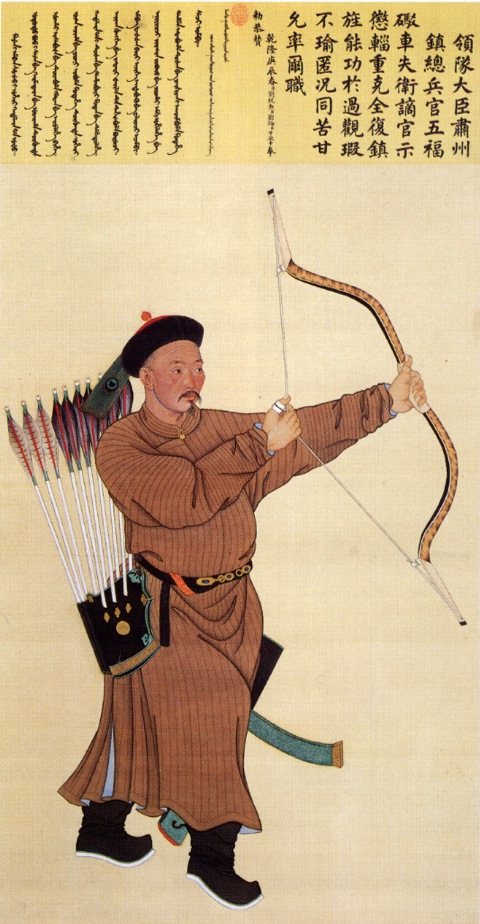
N
Nock:
A shallow groove or at the base of an arrow that accepts the bowstring. The nock allows the arrow to remain in contact with the string during the shot cycle.

Nocking:
The process or procedure of putting an arrow on a bowstring. The bowstring will fit into the nock at the base of the arrow and hence the process itself is given this name.
Nocking Point:
This is a point on the bowstring where the archers would consistently nock their arrows. In order to achieve some consistency in your shots, you should consistently nock on the same place on your string.
Nocking Pliers:
A set of pliers specifically used for installing and/or removing nocks.
Nock Piece:
A fine bit of material (wood, horn and so on) pasted alongside in self-nock for the purpose of reinforcing it.
Nock Set:
A small circular of cylindrical fitting, typically made from brass that is included to the string for marking the ‘nocking point’. This is to ensure the arrow is most certainly nocked on the same spot each time.
Nodes:
As related to archery, the nodes are the spots on an arrow that do not oscillate when the arrow is flying. The nodes actually stay aligned. A bow itself can also have nodes that do not vibrate when the arrow is released and/or the bow is shot. The Japanese yumi, being asymmetrical, actually has the handle on a node, about 1/3 the way up the bow from the bottom. Very little vibration is felt at this point.
O
Osage Orange:
Also known as bois d’arc (wood of the bow, bow wood) by early French settlers. The Osage Orange tree is ideal for making many types of bows. It is similar in characteristics to yew and other old-world bow woods. See our entry for bois d’arc in this glossary for more.
Ottoman Bow:
The Ottoman Turkish bow is considered to be the apex of the Asiatic composite reflex designs. The Ottoman Empire existed near the end of the military usefulness of the bow, due mainly to the introduction of firearms. The Ottomans however produced some of the most beautiful and well-designed bows of all in our opinion. Check out our page on the Turkish bow here.

Overbowed:
Being overbowed simply means that you are shooting and/or drawing a bow that is much too heavy in terms of draw weight for your own strength. Ease up Hercules it’s alright.
Overdrawn:
A condition where the bowstring is extremely short for the given bow.
Overspine:
An arrow that is too rigid for the bow from which it is being shot. This usually results in extremely inaccurate and inconsistent shots.
Overshoot:
The condition wherein the archer is shooting past the mark. They may be shooting at too high an elevation.
P
Parthia:
An ancient Empire in what is in our current day Iran. Parthians ruled over a vast region from 247 B.C.to 224 A.D. Their lands stretched from modern-day eastern Turkey to Pakistan in the west and from the Persian Gulf in the south to Armenia in the north. The Parthians fought against ancient Rome and dealt a crushing defeat to her legions at the Battle of Carrhae in 55 A.D.
The Romans tried repeatedly to advance against the Parthians with no success. The mounted archers, upon noticing the advance of the Romans, would retreat. During these well-organized and fast retreats, the Parthians would use their infamous tactic, the Parthian shot (shooting backward from a horse while in retreat).
The Parthians were known for their horsemanship and archery skills in combat. See our article on the Parthians here.
Parthian Shot:
An archery technique made famous by the Parthians. It involves retreating at full gallop on your horse then turning around in the sale and shooting backward at the pursuing enemy. See our post on the Parthians here.
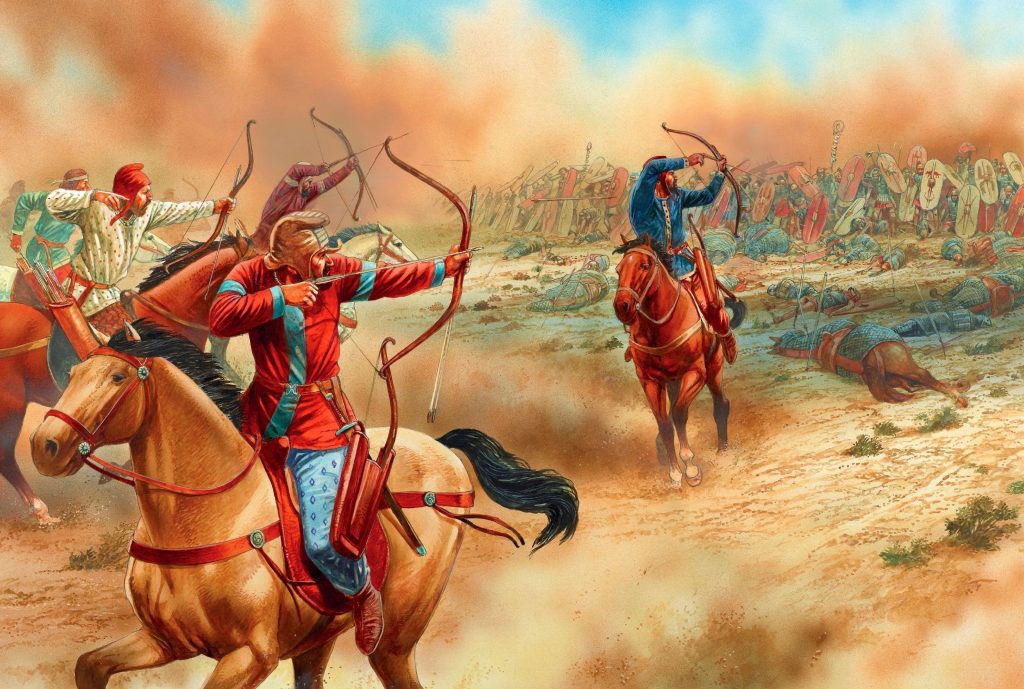
Persia:
Persia was the world’s first superpower stretching its empire and influence far and wide in the ancient world. The Persians also understood the importance of archery as their armies always had plenty of them. See our article on Persian archery here.
Plunger or Pressure Button:
A device used to correct an arrow’s flex at the point of release.
Point
The point is the front end of an arrow; it is also known as the arrowhead, head or tip. It may be called the point because it is pointy.
Parabolic Fletching:
A type of fletching featuring round-shaped fletching at the rear end of the feather towards the notch of an arrow.
Peak Weight:
This term refers to the upper limit of draw weight in a compound bow.
Peep Sight:
A small piece of material, made from a variety of substances including metal, rubber, plastic that has a tiny hole in it. It is fixed onto the bowstring and enables the archer to see through the string so they may align their aim. It is usually used on compounds.
Pile:
An outdated English term referring to the front side of an arrow.
Point Blank:
In archery, this term does not refer to no distance at all between the shooter and the target. It is here the distance to the target is so close that the arrow trajectory is flat.
Point-On:
A measurement of the distance that can be shot at by the archer.
Point of Aim:
An aiming technique involving lighting up the tip of the arrow the visual markers on the target.
Pressure Point:
A spot on the arrow plate opposed to which the arrow would lie and exert pressure during its release.
Puller:
A mat made of rubber used for protecting hands as well as for providing grip while the arrows are being pulled.
Push-Pull Stringing
A technique for string bows, specifically traditional longbows like the English longbow. It is not a widely used stringing method as it can exert uneven pressure on the bow limbs. However, with some practice and care it can be effective enough
Q
Quarrel:
Another name for crossbow projectile; also commonly referred to as a bolt.
Quiver:
A container for an archer’s projectiles (arrows). They come in all shapes and sizes. Some are kept on the hip via a belt, others on the back, some were placed on the sides of a chariot. Lots of fun!
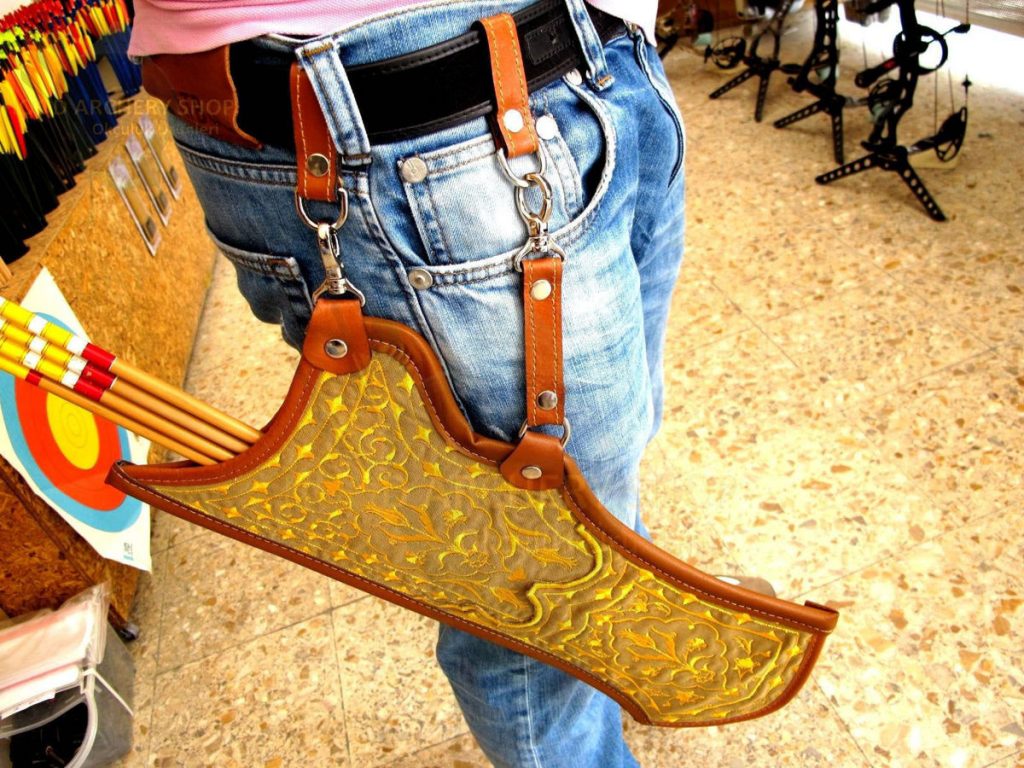
Quill:
The shaft of a feather, which is ground flat to fit on the arrow
Qing Bow:
See Manchu Bow
R
Recurve Bow:
A type of bow that has limb tips that curve away from the archery when the bow is strung. Because the tip is included to keep traveling forward the string and hence the arrow will have greater acceleration than if the limb tip was no recurved.
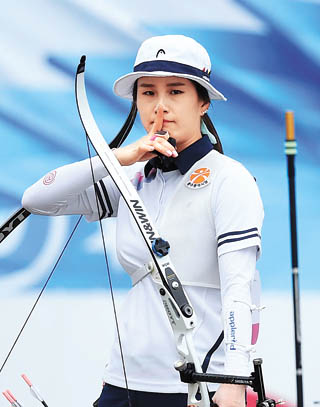
Reflex Bow:
A form of bow in which the entire length of the handle and arms curve away from the archer. Like a recurve but even more re. A reflex bow has inherent geometry that ensures great acceleration of the bow limbs when the string is released by the archer.

Release:
The act of releasing the bowstring with the finger(s) or release aid, causing the arrow to fly.
Release Aid:
A small handheld device that can be clipped to a bowstring and releases when a certain mechanism is engaged. There are several release aids out there. Most modern archers use a release aid.
Rest:
A rest or more specifically an arrow rest is a device used to hold the arrow against the grip while it is being drawn.
Riser:
A term that is synonymous with the grip or handle section of a bow. The limbs of a bow are attached to this central portion.
Run Archery:
So you are the athletic type? Well, that is probably a good thing. Do you also like archery? Why not combine the two? Run archery is a type of field archery where the archer shoots at targets while on the move, either running or walking briskly.
Reed:
Reeds or Phragmites have been used to make arrows for thousands of years. It is a light but stiff type of grass that is found throughout most temperate and tropical areas of the world. They can be very stiff and straight and grow to a meter or more. All these characteristics taken together make reeds a very suitable material for arrows.
Roving:
A form of archery practice done in the great outdoors. The archer first chooses a target, typically a natural feature such as a mound of dirt or a tree. After the target is selected the archer shoots one or more shots and then moves on to selecting new targets. Safety is important and the practice is usually best performed in open areas with a low population density.
Round:
The number of arrows shot at a particular target before scores are tallied and the process is repeated. Competitive archery may have several rounds that vary from event to event.
S
Saxton Temple Pope:
September 4, 1875 – August 8, 1926. Saxton T. Pope is considered one of the fathers of modern American bowhunting. He was a medical doctor and looked after Ishi, the last of the Yahi indigenous people who thought him some of the lost arts of native archery. Saxton Pope had been honored along with Arthur Young to be the name of an American bowhunting foundation that continues to this day: Pope and Young Club.
Siper:
A device from the Ottoman era that is strapped to the wrist of the archer. The siper has a channel on it that hold the arrow as it is being overdrawn, that is the arrow is drawn inside the bbow. This device is used for flight shooting where very short and small arrows are shot to save weight.

Sipahi:
The term sipahi refers to heavy cavalry of the Seljuk Turks, and later almost every kind of regular Ottoman cavalry. The short Asiatic composite reflex bow that was used by the Ottomans also came to be called the sipahi. The term now mostly refers to these short yet powerful bows used primarily on horseback.
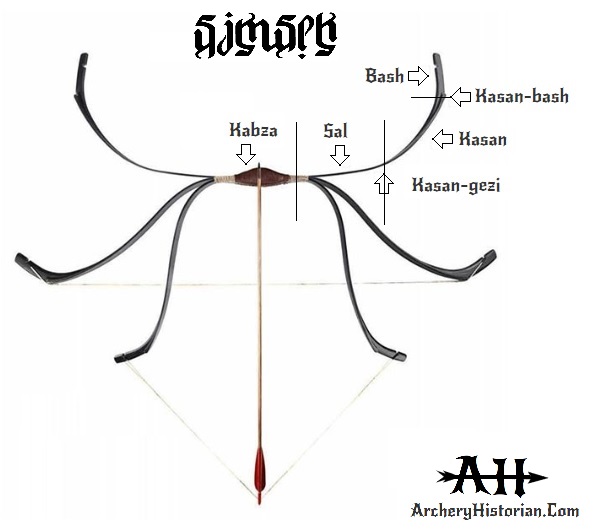
Strike Plate:
A small flat surface is attached to the side of a bow just above the handle. The strike plate takes the wear and tear caused by the friction of passing arrows as they are released from the bow.
String:
The string of the bow is an essential component. It is the intermediary between the energies stored in the bow limbs and the arrow. Nowadays bowstrings are made from a variety of synthetic polymers. Back in the day, they have been made from a wide variety of natural materials including horsehair tendons, and hemp or silk.
Stringing:
The act of putting the bow under tension by putting the string on the bow.
String Silencer:
The bow, as we’ve discussed the bow is an energy storage and transfer device. Not all of that energy is transferred however, some of it is reabsorbed by the bow itself. This excess energy can be felt as vibrations in the bow and string after release. String silencers are devices that attach to the bow string and help dissipate some of this energy. They come in a variety of shapes and sizes. Some of the more common ones include the “cat whiskers” variety.
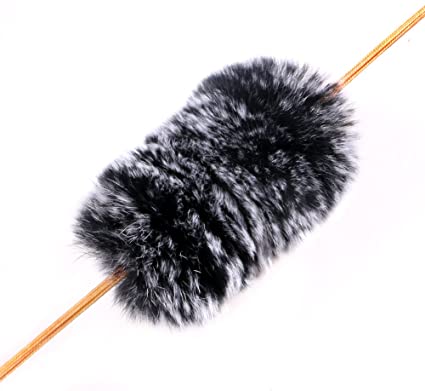
Safety Arrow:
An arrow with a large, soft tip or padded head, often used for reenactments and cosplay where safety would be a concern.
Self Bow:
This term describes a bow made from a single piece of material (typically wood). These are some of the earliest forms of a bow. Archery with a simple self bow is one of the purest and ancient forms of archery.
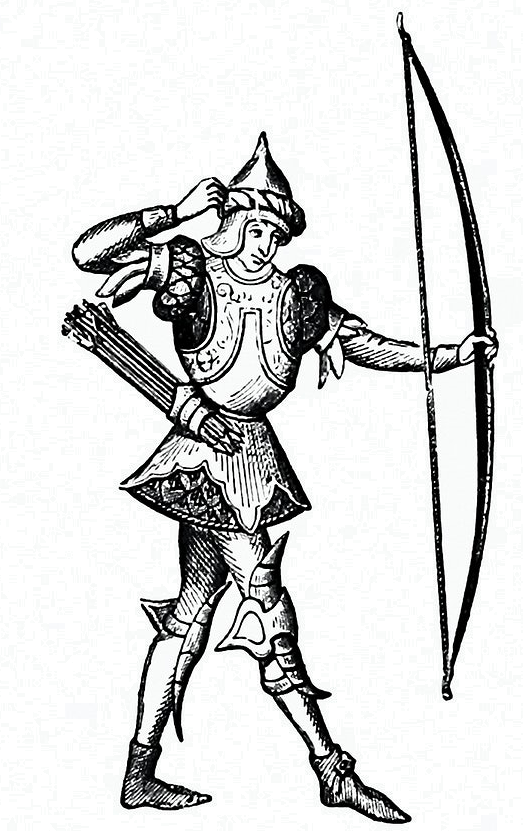
Serving:
Serving refers to an extra amount of thread wound around a bow string in order to support or protect the main string fibers. It is usually wound around the main string at the ends where the string is nocked into the limb tip as this is where friction and abrasion are likely to occur the most.
Shaft:
The main, central part of an arrow. The shaft is where the other bow elements ( arrowhead, nock, fletchings) attach.
Shaftment:
Part of the arrow upon which the fletchings are attached. Basically the back or end portion of an arrow shaft.
Shaft Feathers:
This term refers to the two feathers which oppose the cock feather. They are 120 degrees apart from the cock feather.
Shè dào (射之道):
The traditional practice of archery in China. See our post on traditional Chinese archery here.
Shooting:
The act of releasing or loosing an arrow is also sometimes called shooting.
Shot:
The release of a single arrow from a bow.
Shooting Glove:
A shooting glove or just glove is an article of protective gear for an archer’s fingers. See our entry for “glove”.

Spine
Easton archery gives a very easy-to-understand definition of arrow spine so I will give their definition here. Spine is basically the stiffness (or lack thereof) of a particular arrow. Easton archery writes:
“The spine rating of an arrow is simply a measurement of its stiffness. The same Easton arrow comes in a variety of stiffness: the lower the number, the stiffer the arrow. For example, a 330 arrow is stiffer than a 500 spine arrow. There are two kinds of spine (stick with us, we promise not to get too technical). There’s static spine, which is how an arrow reacts when an 880-gram (1.94 lbs.) weight is suspended from the center of the arrow. The arrow must be 29” in length and supported by two points, which are 28” apart. The number of inches the arrow deflects or bends X 1000 due to the weight is the spine size or measurement of an arrow. So, a 500 arrow bends .5-inches when the weight is applied.”
See Easton archery’s full article on spine here.
Stabilizer:
Stabilizers attach to the riser of modern recurves or compounds and stick out in the direction the archer is shooting their bow. They act as a weight to counterbalance the force the archer will apply on the bow when they draw the bow.
Stave
A stave refers to a strip or single piece of wood from which a bow will be made. Trees are typically cut into staves as the first step in the process of making various types of bows.

Self Arrow:
Just like a self bow, a self arrow is made from a single piece of wood with an incision into the shaft for the nock.
Shield Cut:
A type of cut applied to fletchings. They may resemble certain types of medieval shields and hence the name.
Stump Shooting:
Similar to roving (see entry for roving). Stump shooting or stumping refers to archery practice typically conducted in a wooded area where trees are selected as targets and consequently shot at.
Stalls:
Stalls are protective fingertip coverings. Instead of a full glove, these just slip over the intended fingers.
T
Tatars:
A group of Turko-Mongol peoples of the Eurasian Steppe. They were assimilated into the horde of Genghis Khan when he rose to power. Tatar people still exist in Eastern Europe, and Mongolia to this day. They are present in the Crimea and the Crimean-Tatar bow is an excellent example of the Asiatic composite reflex bow in one of its final forms.
Tatar Bow:
The Tatar bow also referred to as the Crimean-Tatar bow is an Asiatic composite reflex bow similar to an Ottoman Turkish bow but typically larger, with a grip that is set back and a more aggressive siyah angle.

Tab
A small piece of protective cloth, usually leather, that is positioned on the fingers of the draw hand. It does not fit over the entirety of the fingers like a shooting glove but offers some protection.
Target Archery:
The practice of archery that involves shooting at targets from various distances.
Target Panic:
This is a psychological condition that involves the archer “panicking” as the shot is about to line up and the arrow is about to be released. That is why we have sports psychologists. See our article on target panic and archery hypnosis here.
Target Point:
Also called a field point. These are arrowheads that are bullet-shaped and are usually easily removed from certain targets once they penetrate them.
Target Shooting
Simple and self-explanatory. Target shooting involves shooting arrows at a target.
Thumb Ring
A ring is used to protect the archer’s thumb when using a thumb or Mongolian draw. Thumb rings have been made from a variety of materials including, wood, horn, bone, metal, jade, ivory to name a few. Check out our article on thumb rings here.
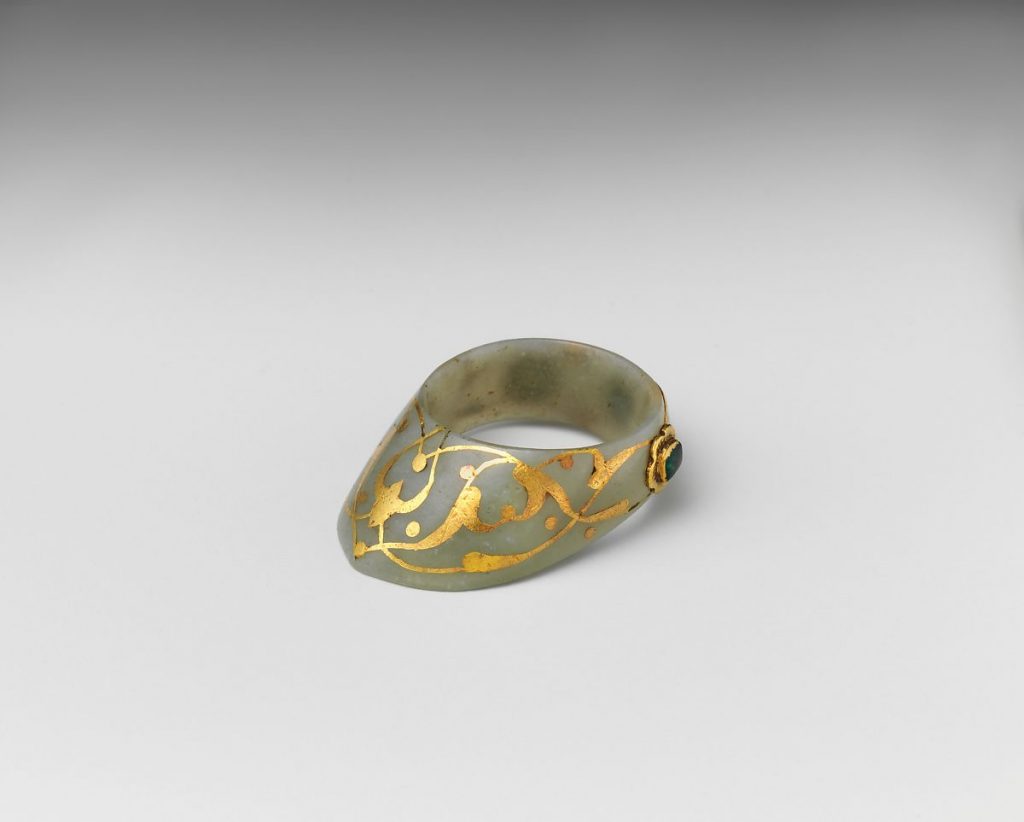
Tip
The top of the arrow, opposite to the nock. The term tip may also refer to the very end of the bow limbs.
Tong-ah
An overdraw device used in traditional Korean archery, similar to the Turkish majra.
Tackle:
The archer’s equipment. Gloves, arrows, strings, protective gear, etc.
Throat:
The tapered part of the grip on some more modern recurves where the thumb and index fingers would hold the grip. It’s the throat because that’s where you would do the Vader style force choke on the bow.
.
T-Square:
An instrument that is used for measuring the brace height and locating the nocking point on the string.
Tune:
The process of getting the bow performing accurately and to the liking of the archer.
Takedown Bow:
A bow that comes apart or one that can be taken apart or “taken down”. They can be taken apart into 2 or 3 pieces. The most common ones come apart at the handle into two roughly equal lengths.
Tapered Arrow:
An arrow that does not have a straight, cylindrical profile but tapers along its length.
Tassel:
A piece of yarn is worn at the archer’s belt for the purpose of cleaning arrows.
Taxus Brevifolia:
The yew tree. This genus and species of yew wood used for making selfbows, especially longbows.
TOTO Bows:
A bow manufacturer of quality traditional archery gear out of Belarus.
Tiller:
A tiller or bow tiller is used to stabilize, adjust and balance the limbs of a bow when it is being made.
Timber Hitch:
A special type of knot that is used on a bowstring for the purpose of being able to quickly change the length of the string.
Tip Overlays:
Tip overlays refers to material that has been added to the limb tip for reinforcement and strength.
Torque:
Applying a force to the bow handle when drawing produces a force on the bow and causes it to behave a certain way when the arrow is released. The katrah or follow-through technique in Turkish archery requires applying a small amount of pre torque to the wrist which causes the upper limb to snap forward upon release.
Toxophile:
A person who is obsessed with archery. They are usually a good shot too. Sometimes they even write crazy long blog posts about archery just because archery.
Traditional:
Not modern. If the components that comprise the bow or the tools used to make the bow, consist of nuts, bolts, washers, or any component which requires modern machining that was only around since the time of the first industrial revolution (18th Century A.D.), it is not traditional. Sorry. Archery was around way before the 18th century A.D. Not my opinion, this is a historical fact. Not like I really care, shoot what you like.
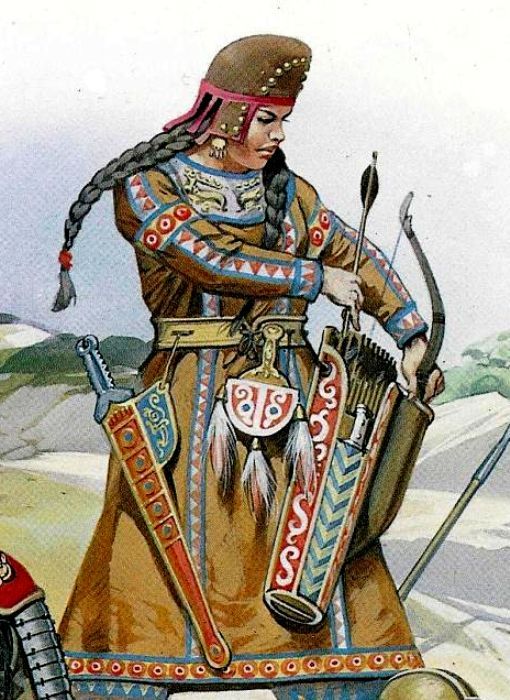
U
Underspine:
An arrow that is too flexible for the given bow weight. This will cause the arrow to flex too much as it leaves the bow and will result in inaccurate shots.
Upshot:
The last shot in an archery contest
V
V-Bar:
A small piece of hardware that is attached to the riser of modern bows. The V-Bar like the name suggests is in the shape of the letter “V” and stabilizers can be attached to the V-Bar.
Vane:
The stabilizing fin of a modern arrow that is shot from a modern recurve or compound
Vectran:
A name brand of a modern bowstring material.
W
Wand Shoot
A competitive archery event where the archer shoots at a plank of wood about two meters high and only about 5 inches wide.
Welsh Longbow
A powerful medieval bow; also known as an English longbow. After the English encountered such weapons in Wales they were used by the English ever afterward. They were long self-bows made of elm or yew.
Windlass:
A device of the middle ages used for pulling or winding the string back on the crossbow.
Window:
The cutout central portion of a more modern bow where the archer can look or sight down the shaft of the arrow for aiming.
X
Not too many words begin with the letter “x” and there doesn’t seem to be one in the field of words for archery either. However, here are some archery related websites with the letter “x” in their name.
Y
Ya (equipment):
The Japanese word for arrow. The word typically refers to the arrows used in kyudo, or traditional Japanese archery. The traditional material for these arrows is bamboo. They are considered relatively long arrows by modern standards, being about a meter in length. These arrows are shot from the traditional Japanese bow, the yumi
Yabusame (practice):
A type of mounted archery practiced in Japan. The mounted archer moves forward at full gallop and shoots three blunt, turnip shape-headed arrows at three wooden targets. The practice of yabusame came about in the early 12th century A.D. and continues to this day.
Yew:
A type of wood traditionally used to make bows, especially English longbows.
Yumi:
An asymmetric Japanese bow; includes both long and short varieties (daikyu and hankyu). Although the samurai of feudal Japan are known today for their swordsmanship, early samurai placed a special emphasis on mounted archery.
These bows are made from bamboo laminations, and their traditional construction goes back many centuries. The 3rd century A.D. Book of Wei, a Chinese manuscript describes the asymmetric shape of the yumi.
These bows are quite unique in their size and shape. Typically they measure around two meters in length, with the handle being about only a third of the way up from the tip of the lower limb. Approximately two-thirds of the bow is the upper limb, above the grip.

Yarn Tassel:
A bunch of yarn being used for wiping the dirt and debris from an arrow.
Z
Zihgir:
Yes, we got one in there for the letter Z! Zihgir is the Turkish word for a thumb-ring. Please see the above section for “thumb-ring”.
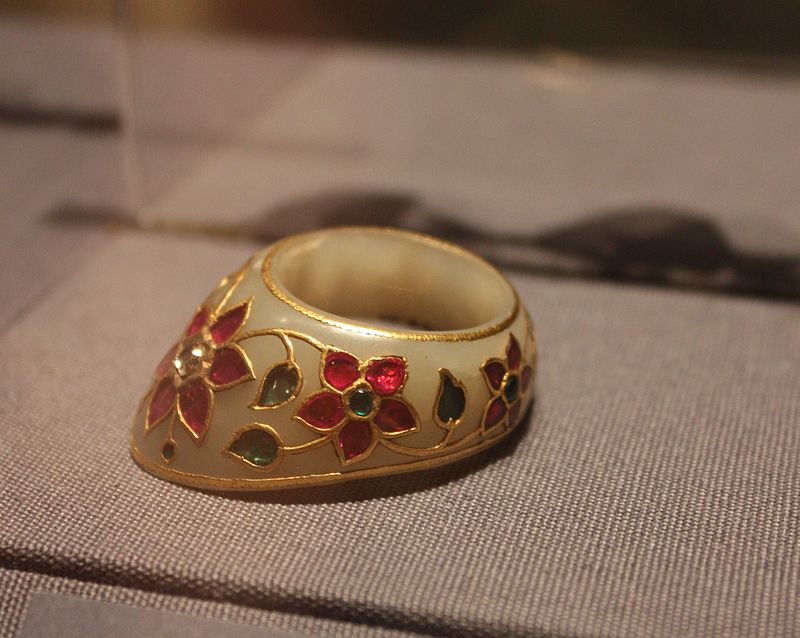
That concludes our archery glossary of terms! If you read this whole thing you are a champ! We may be adding to or updating this archery glossary of terms in the near future or as new information becomes available.